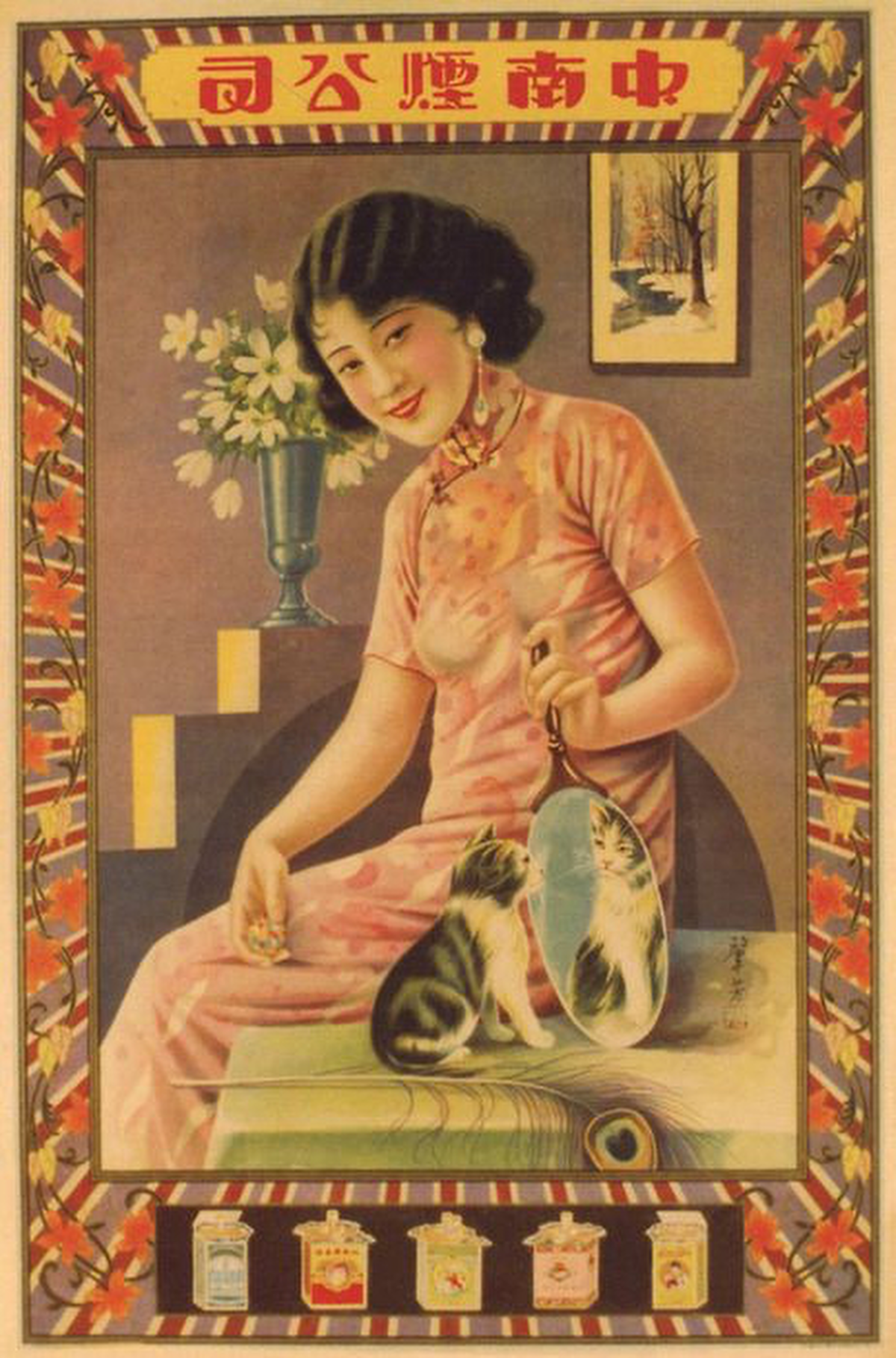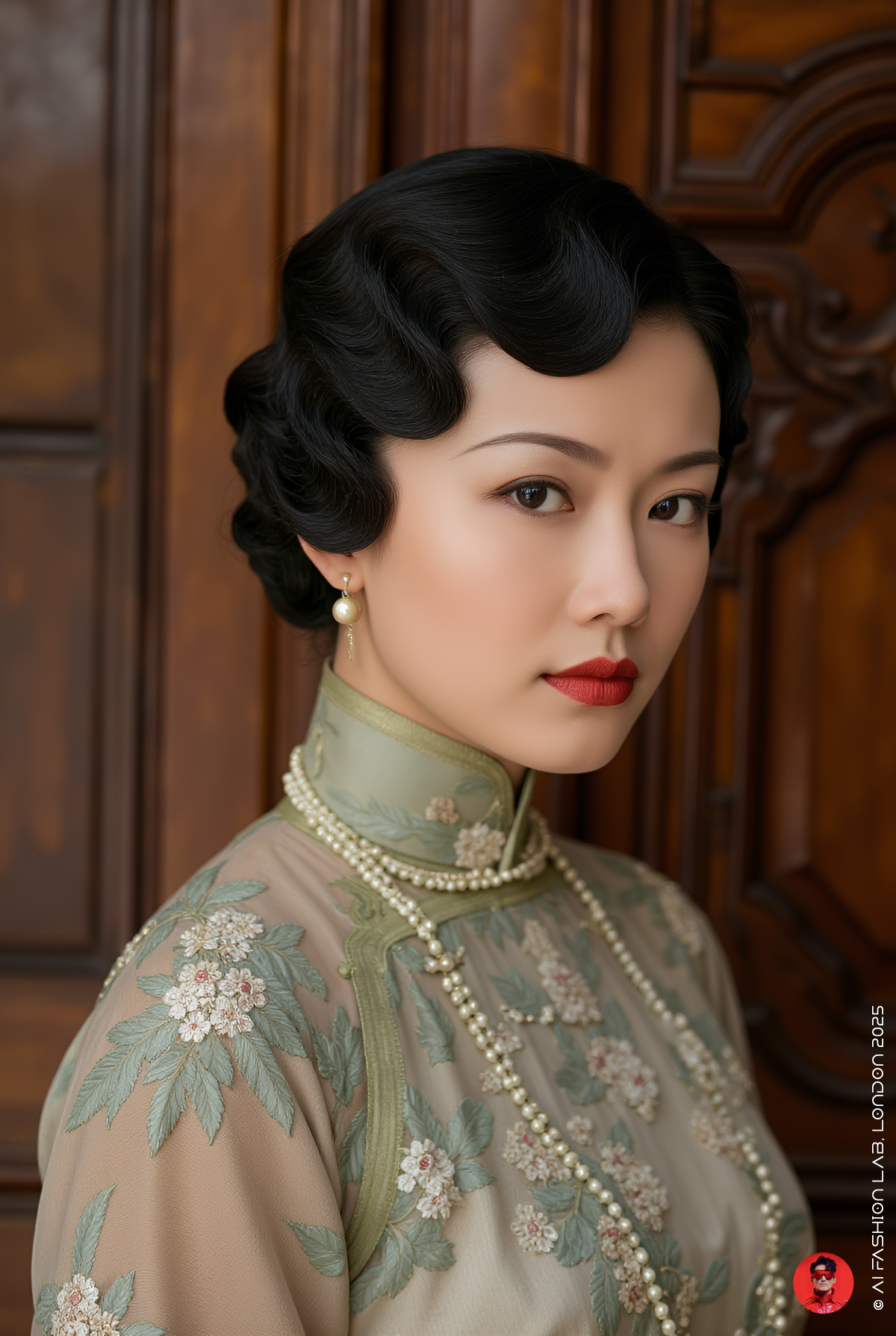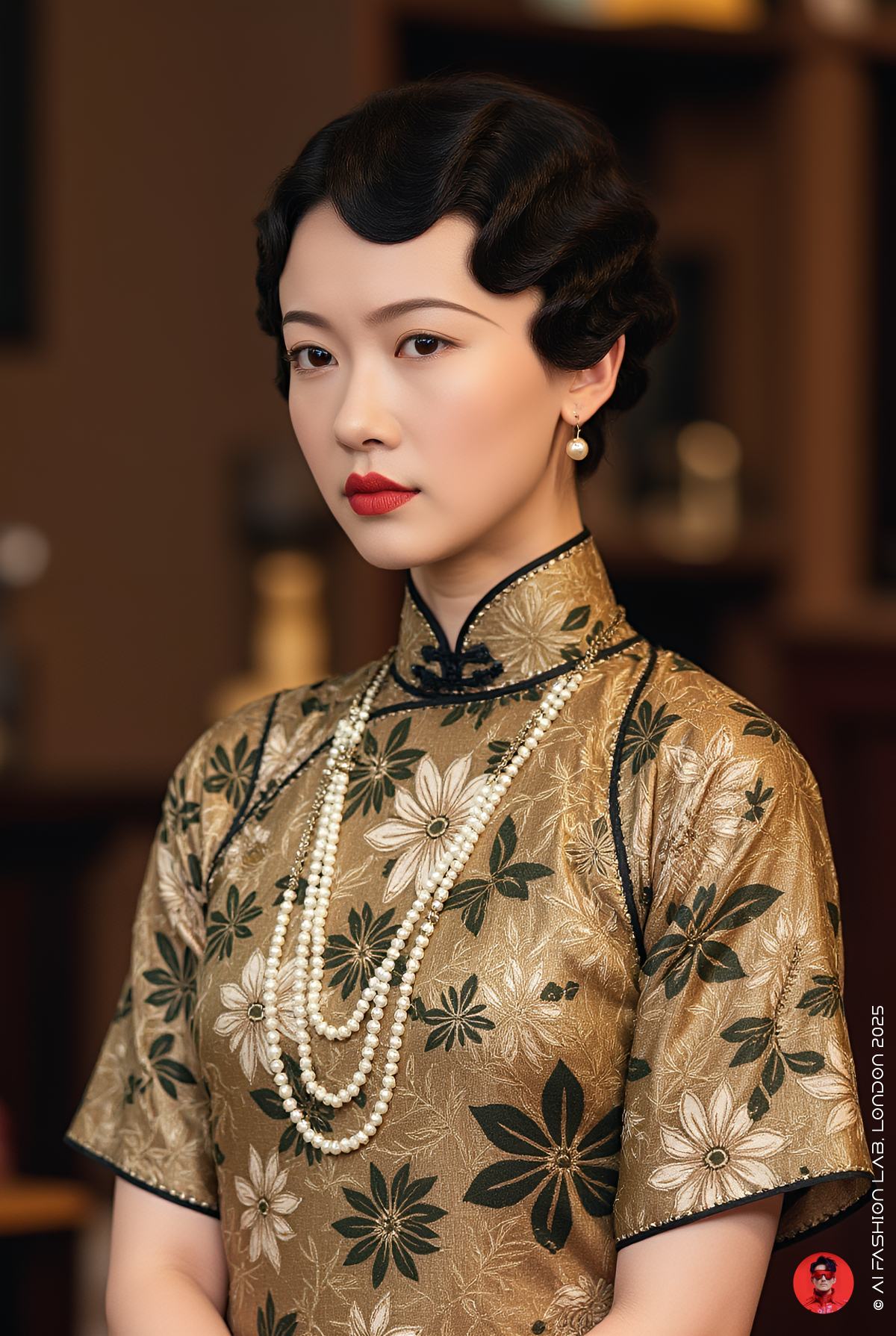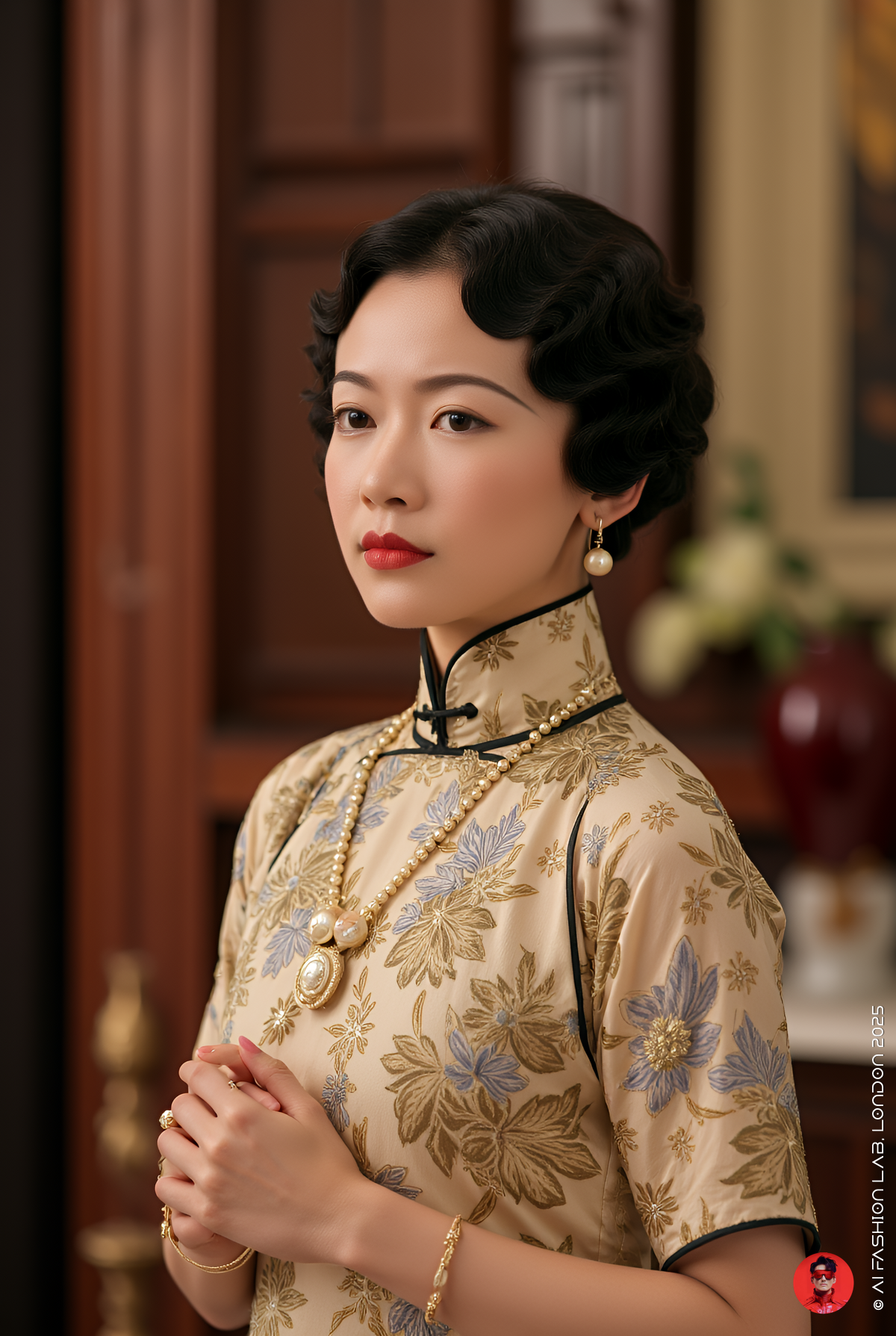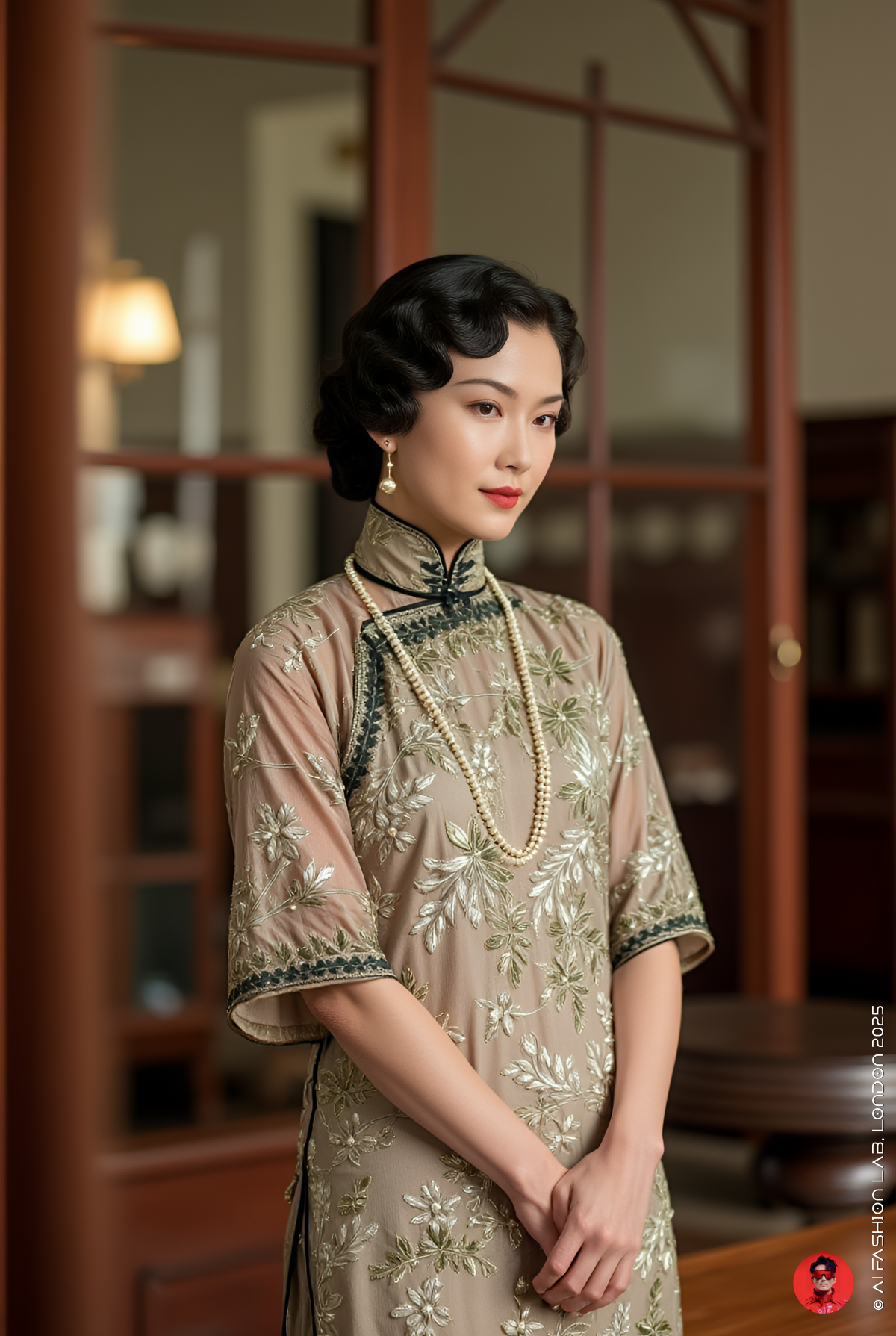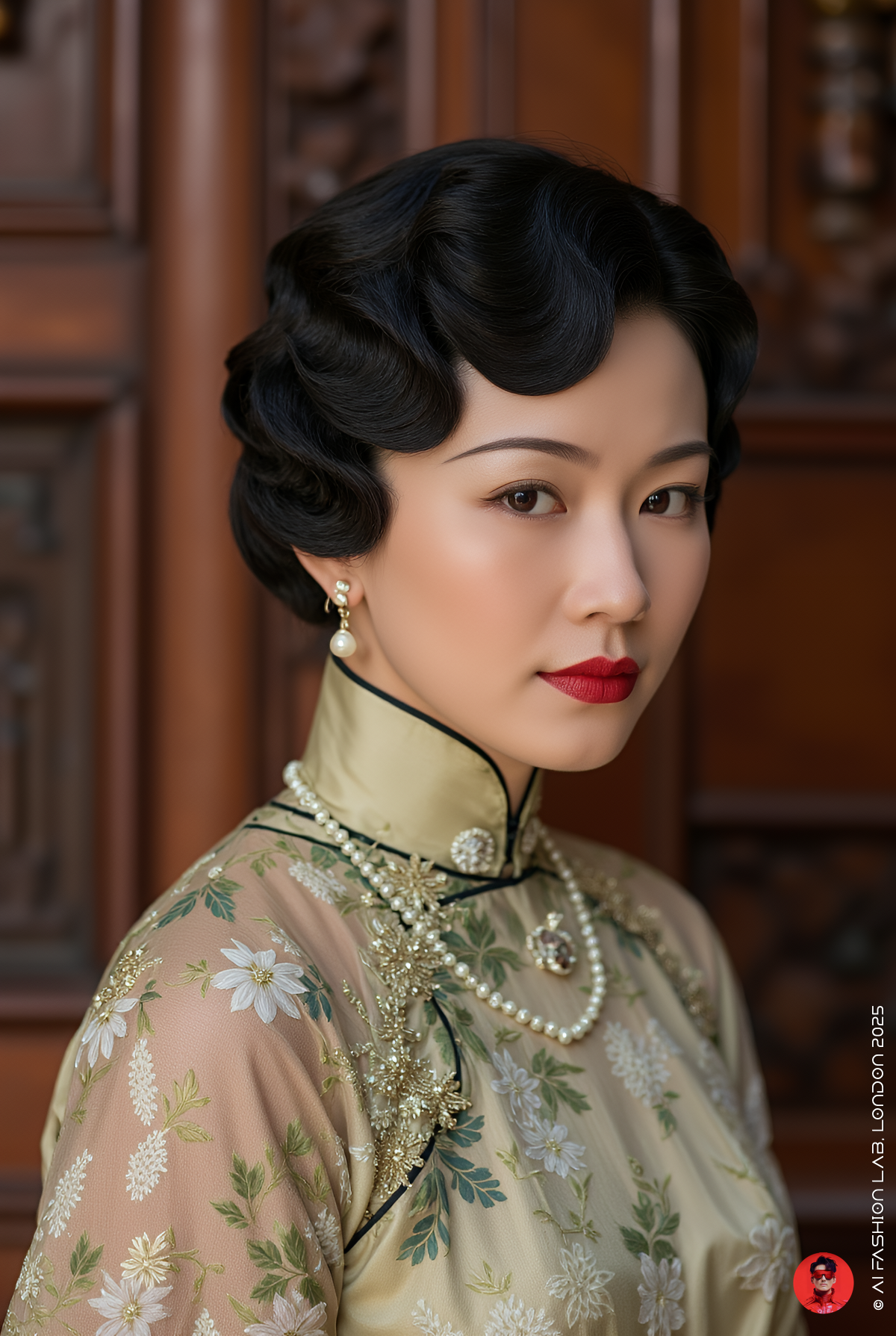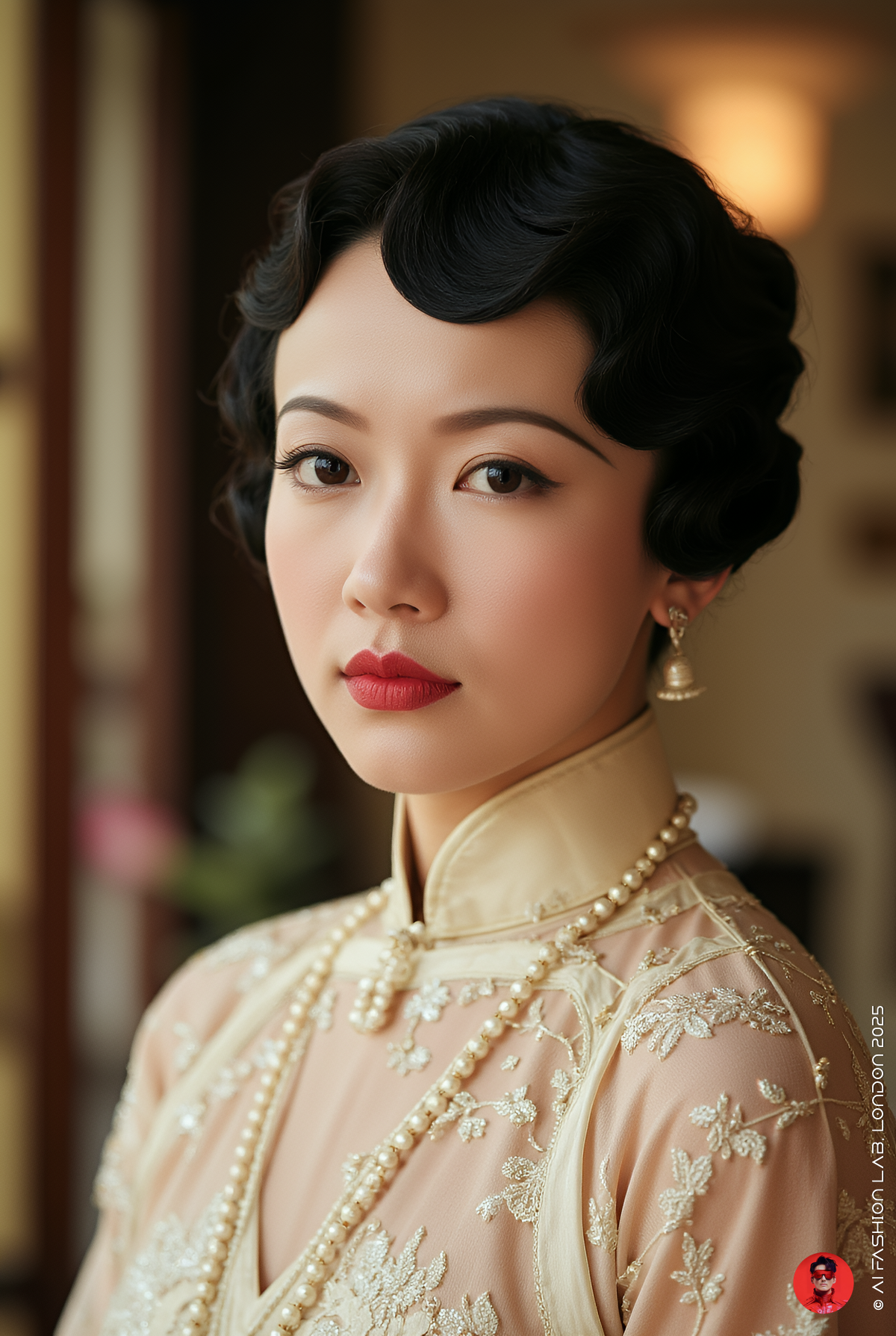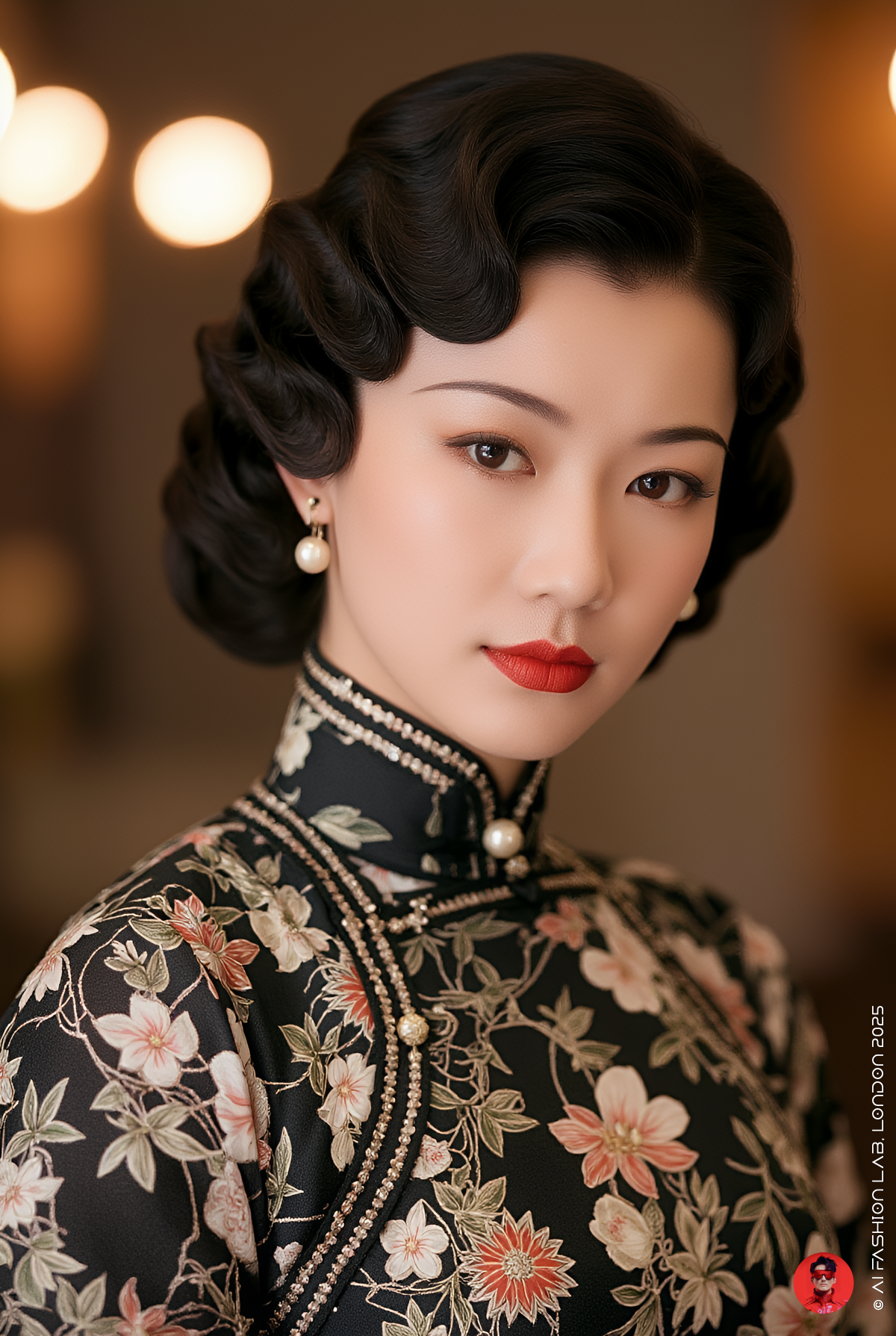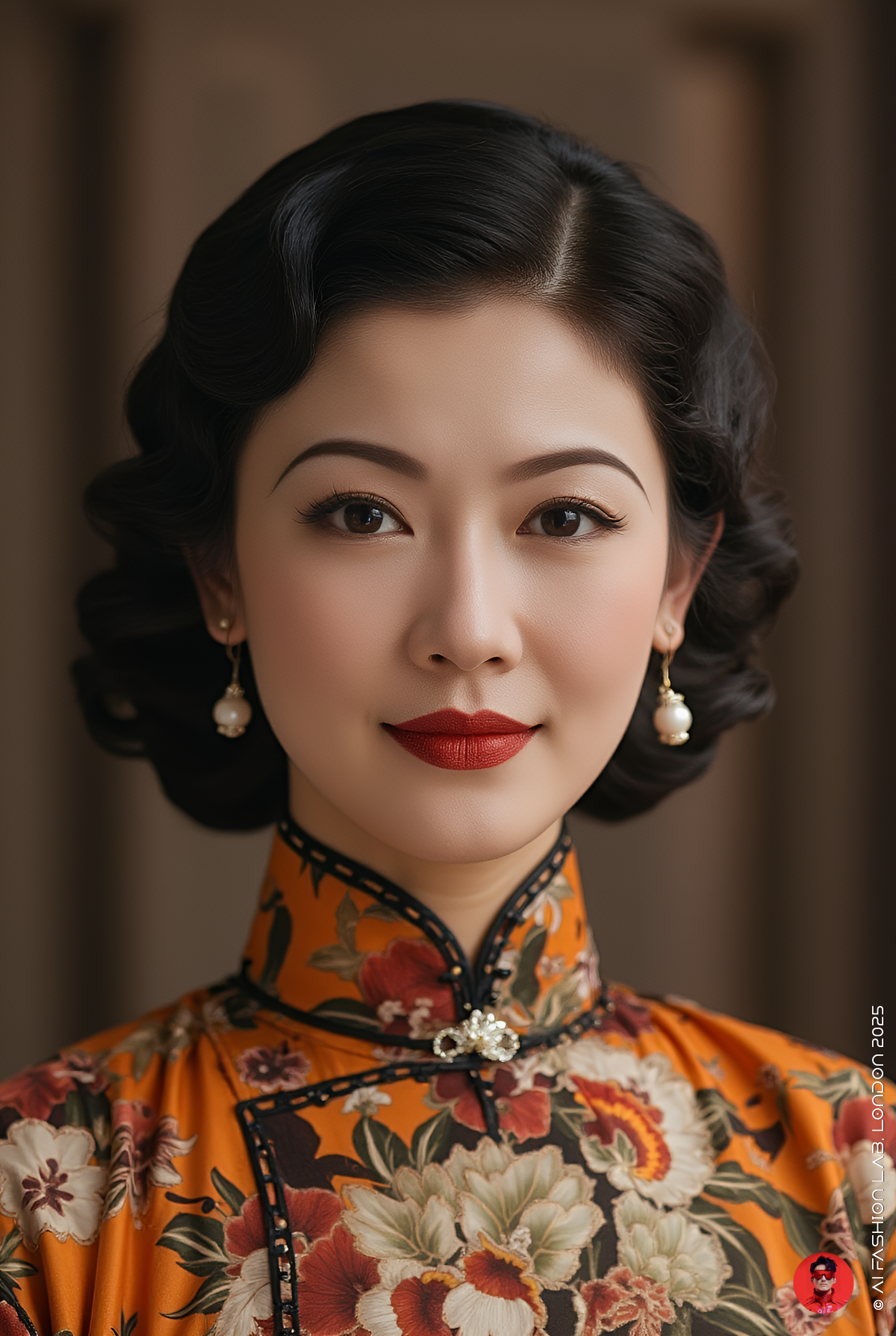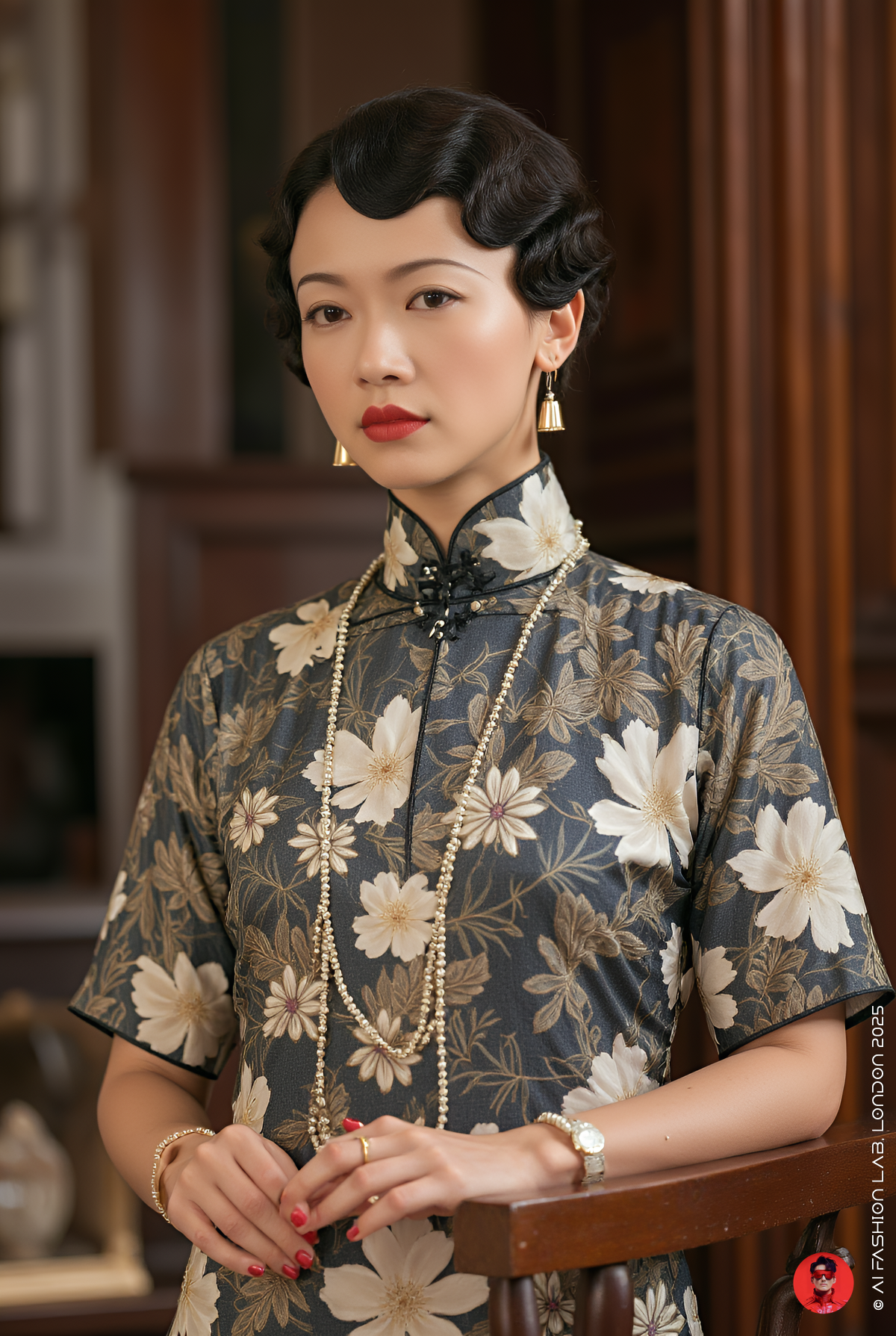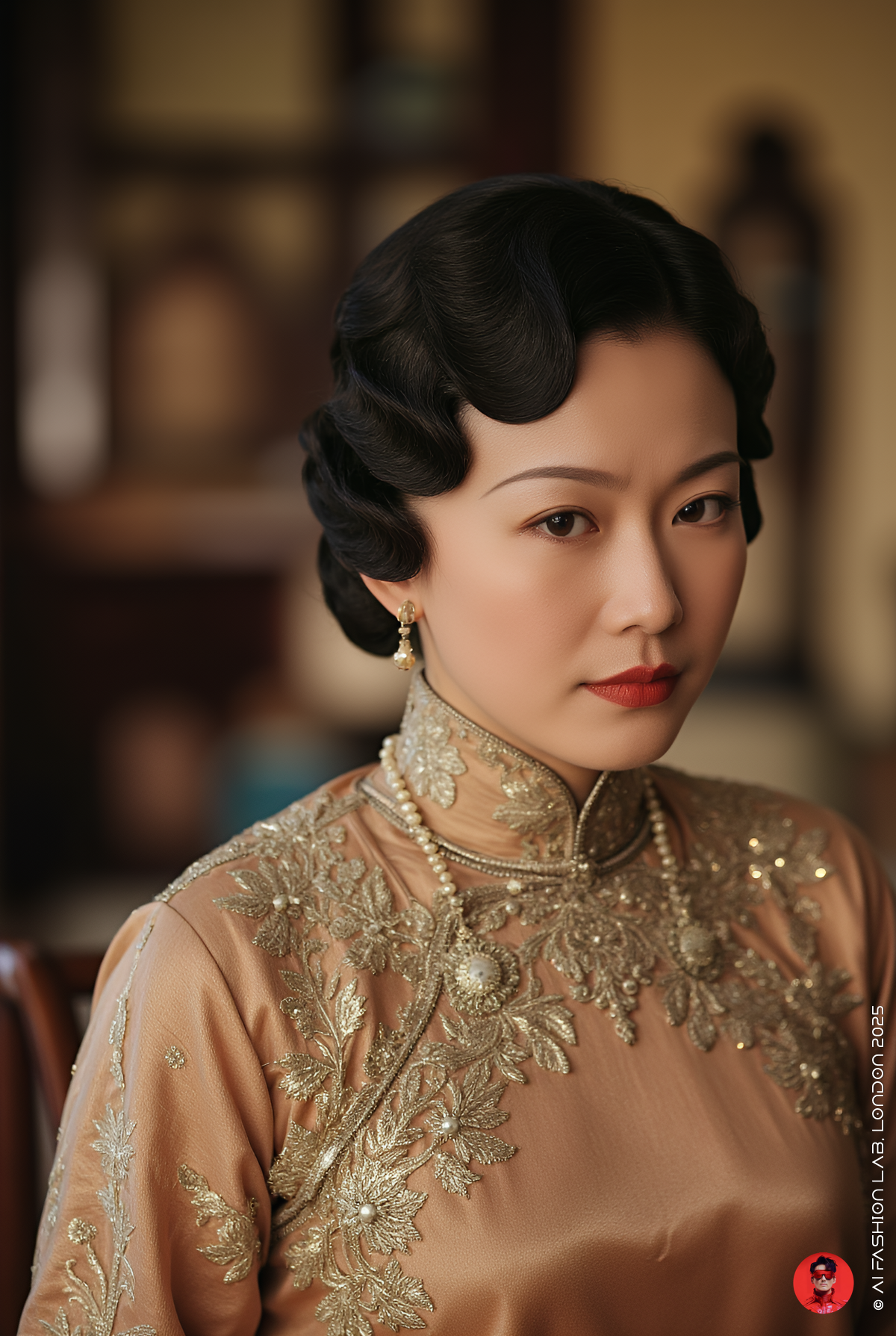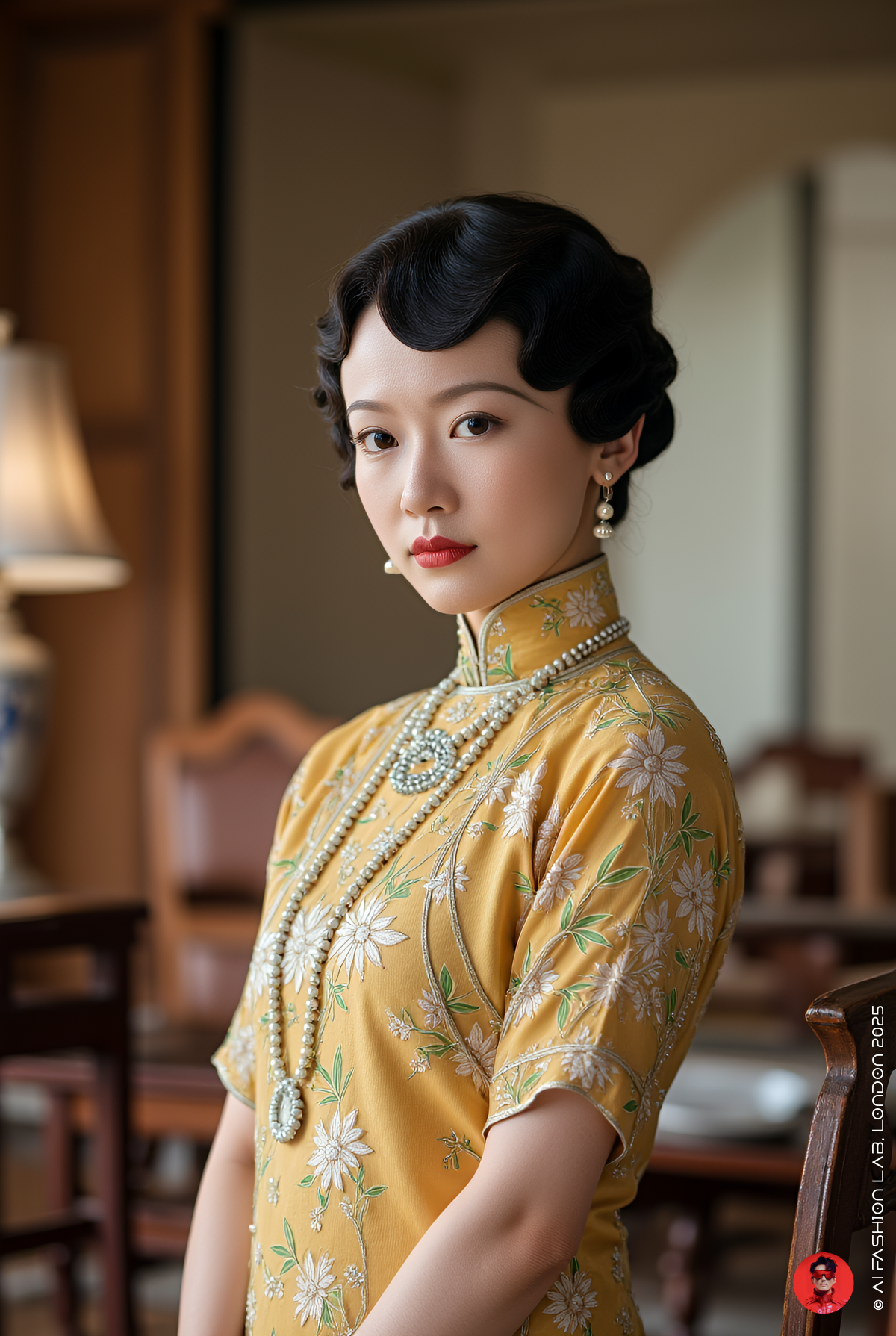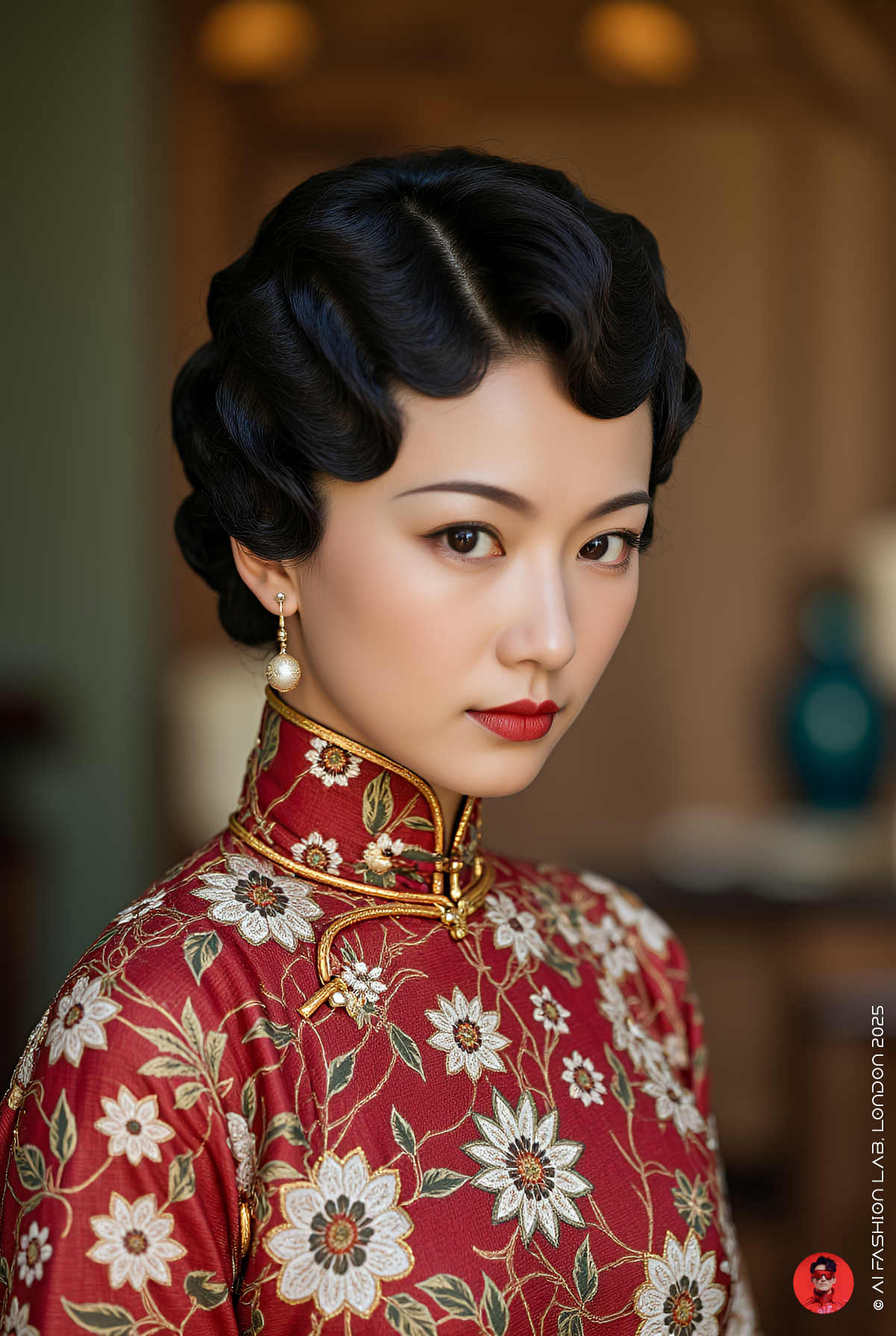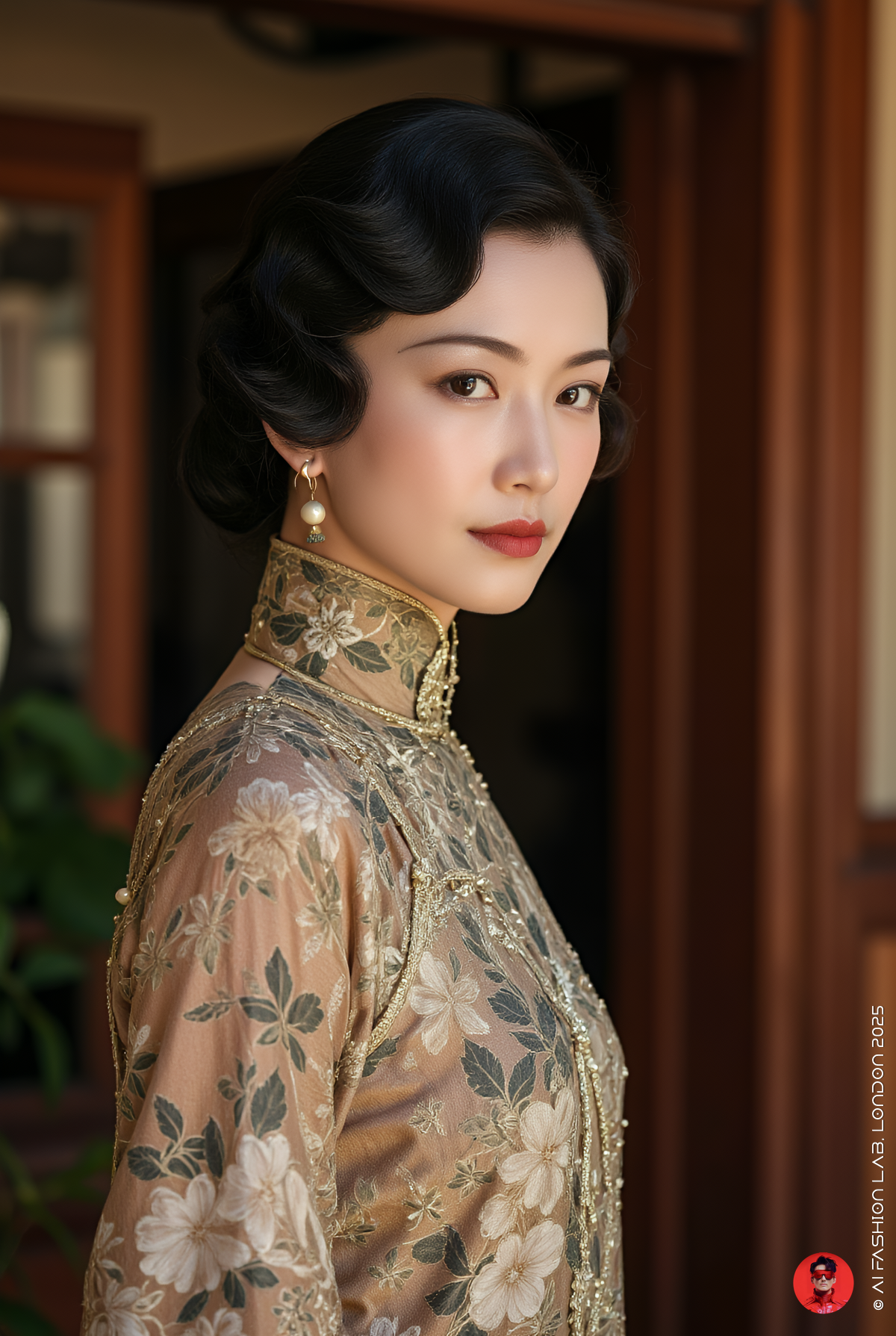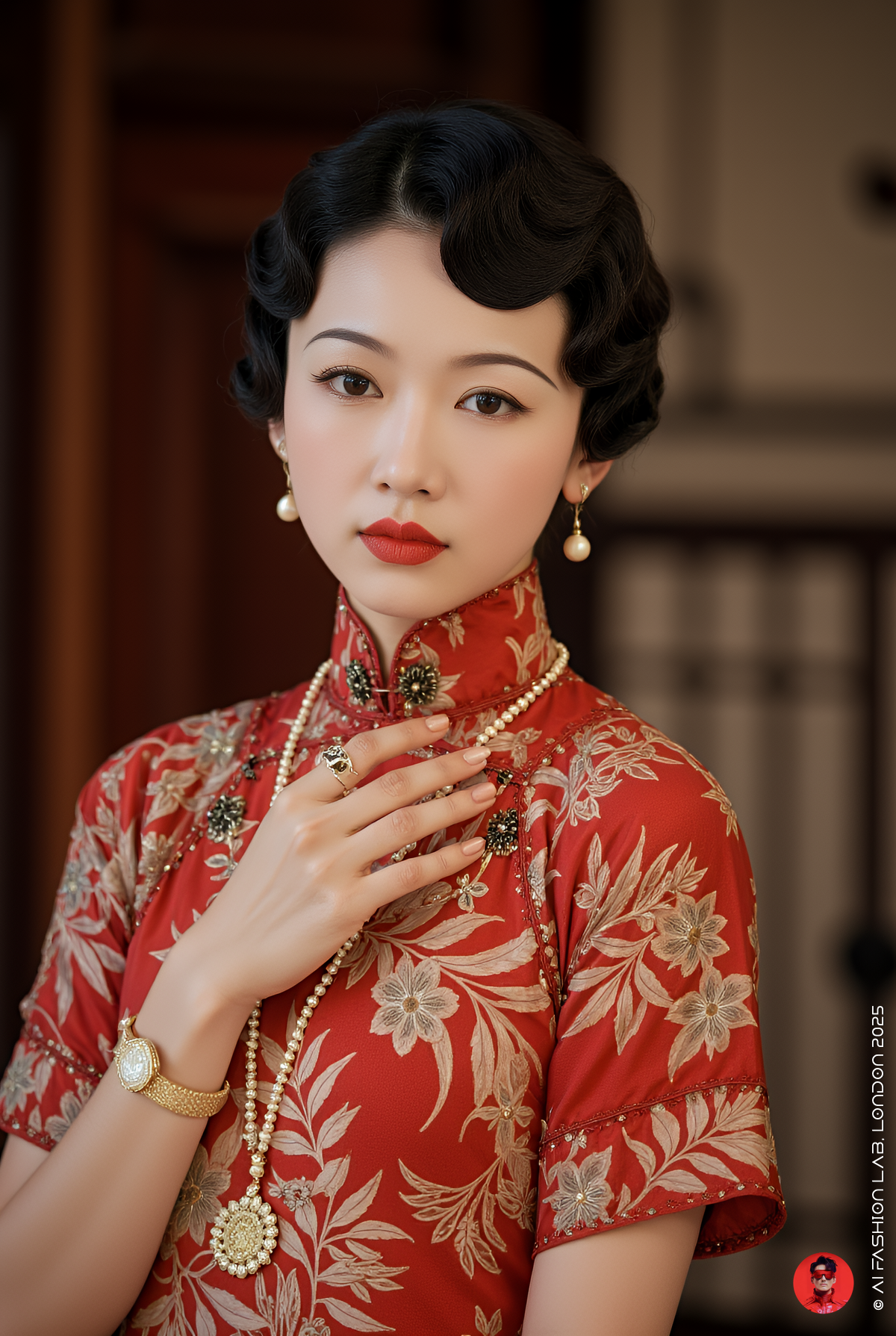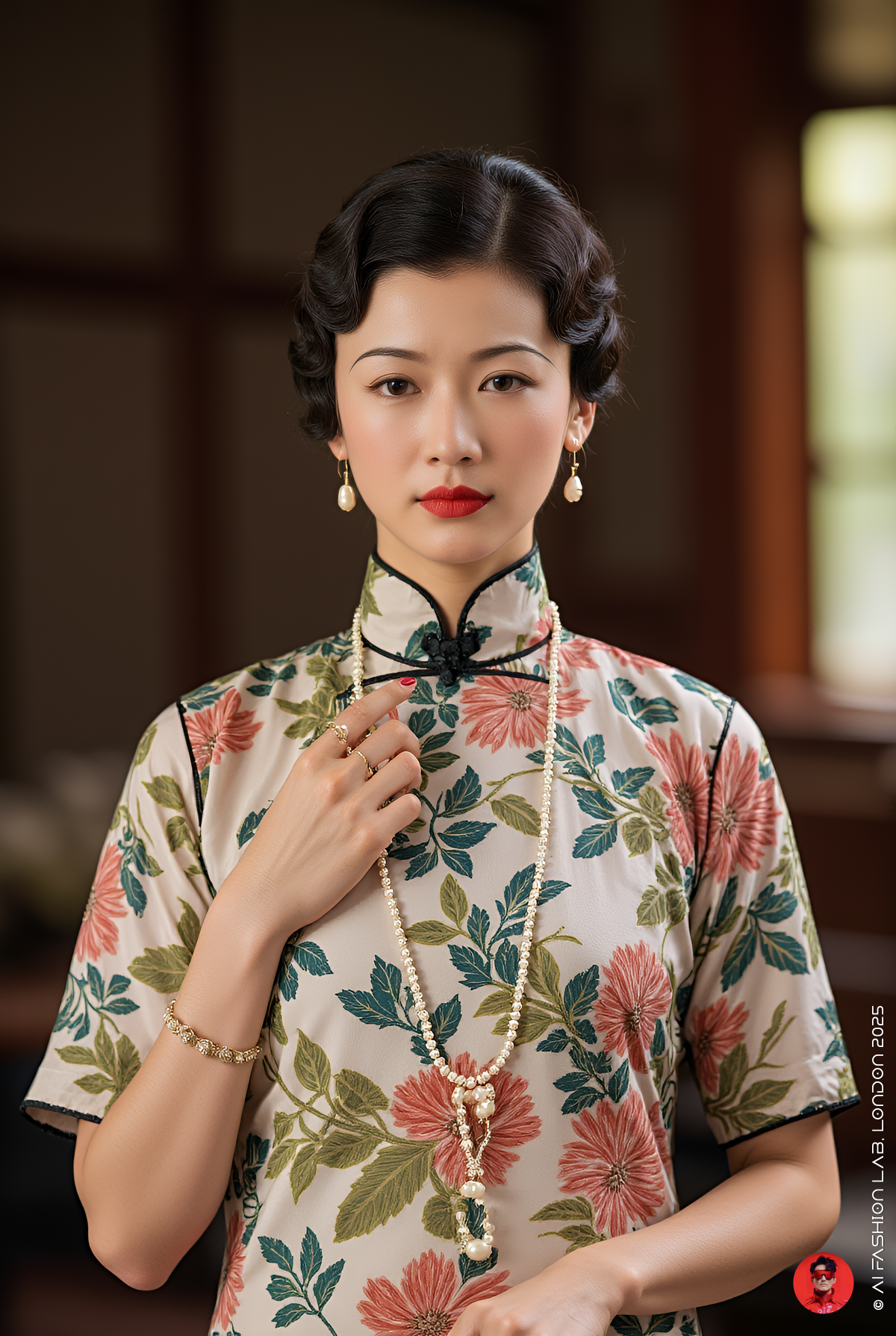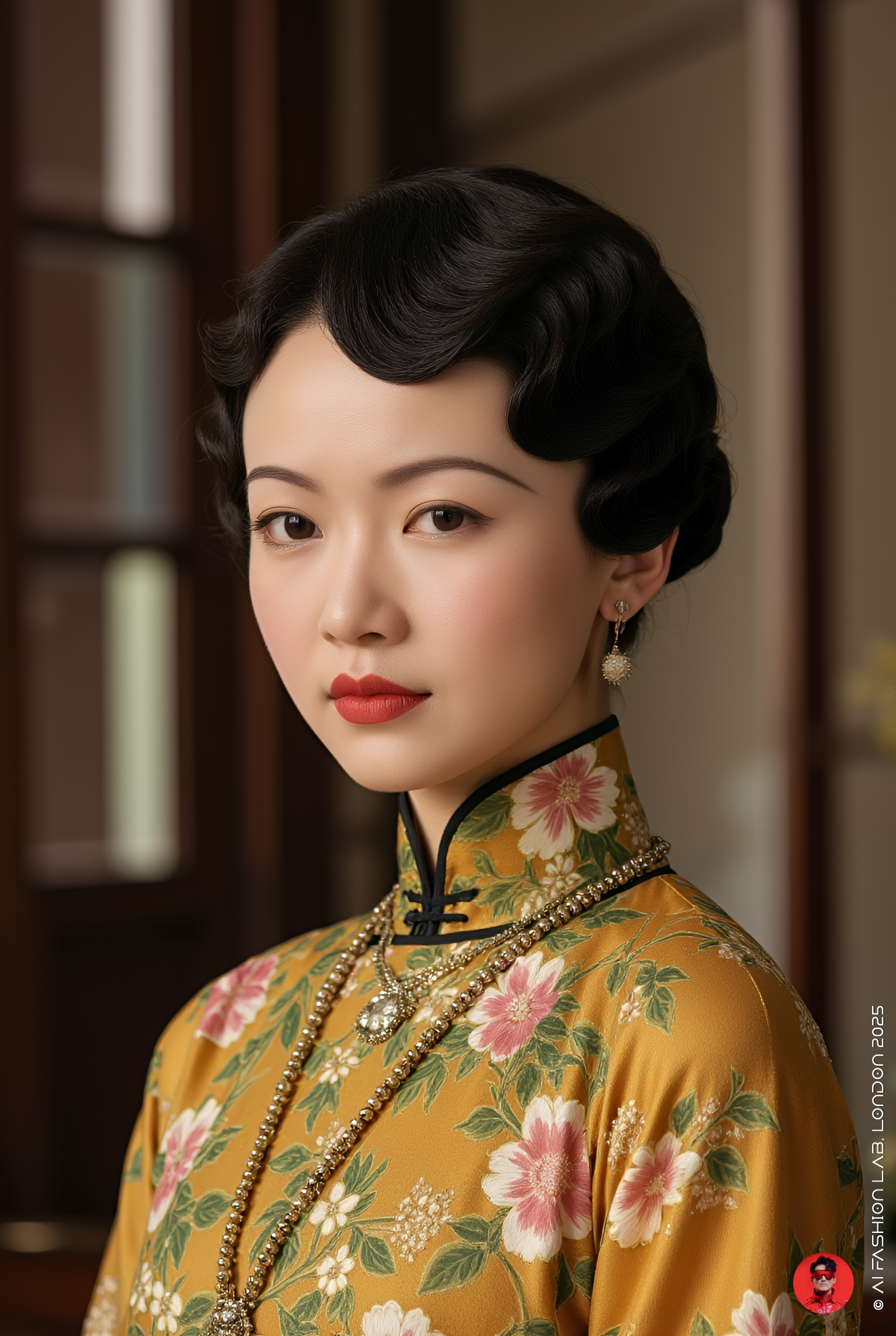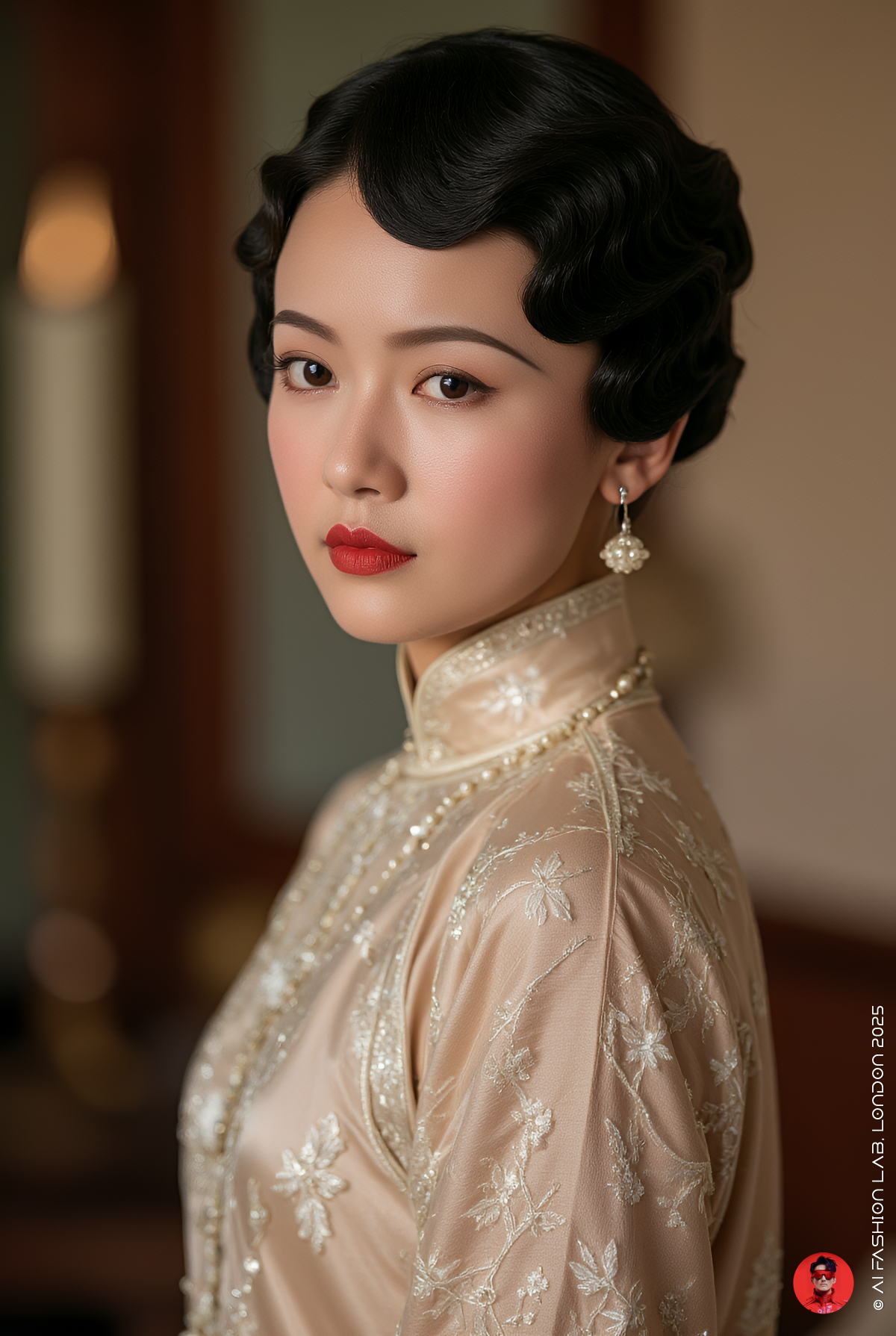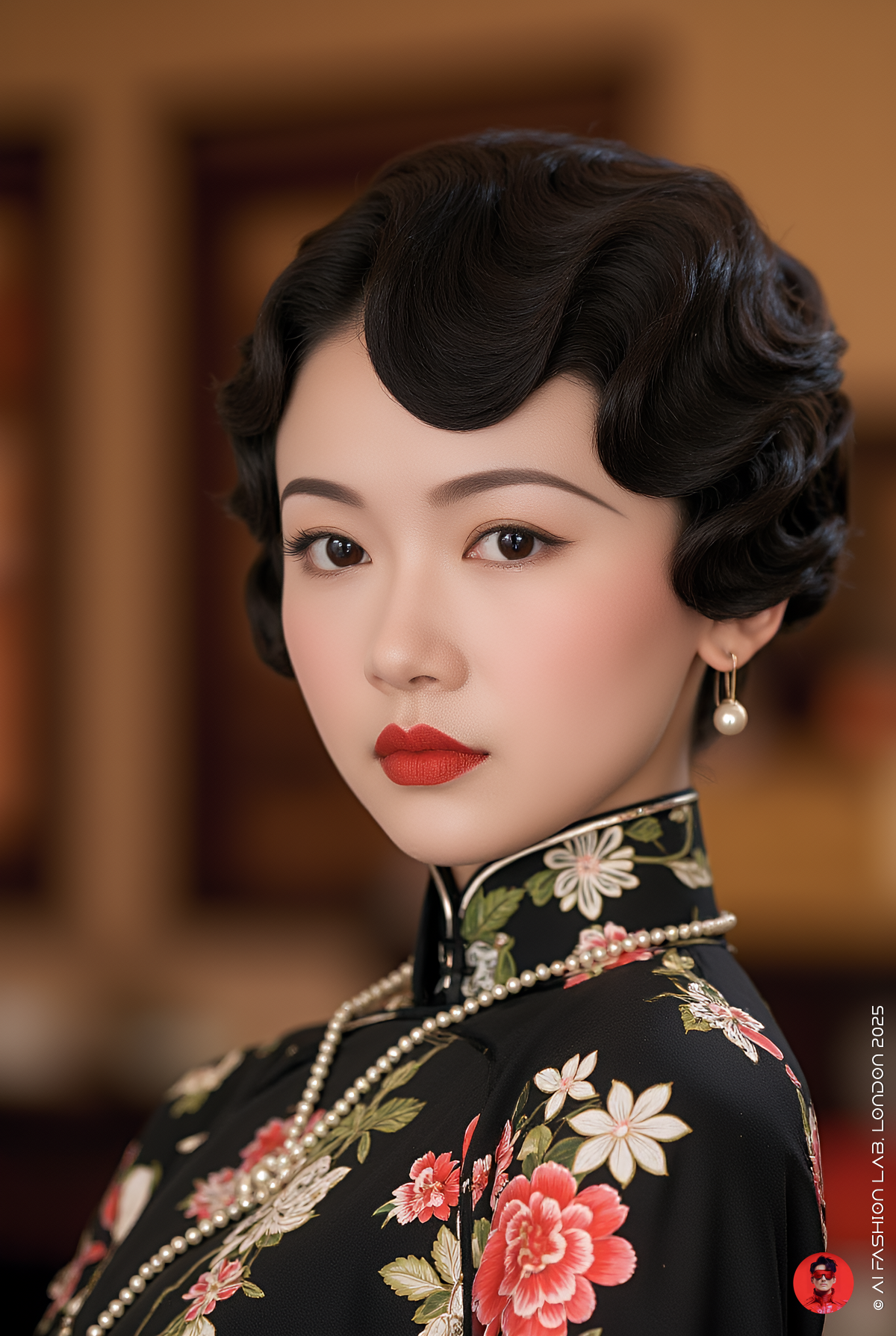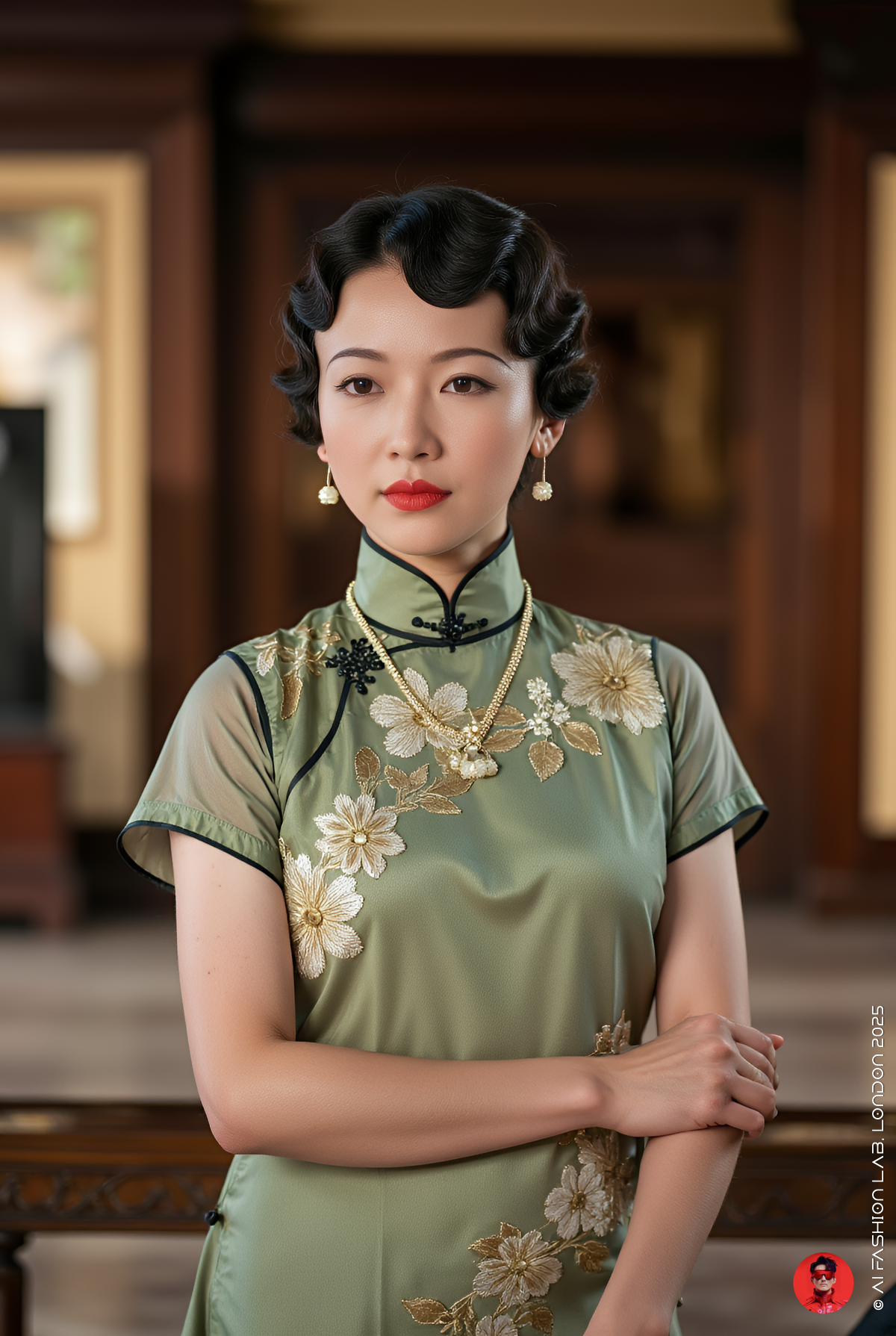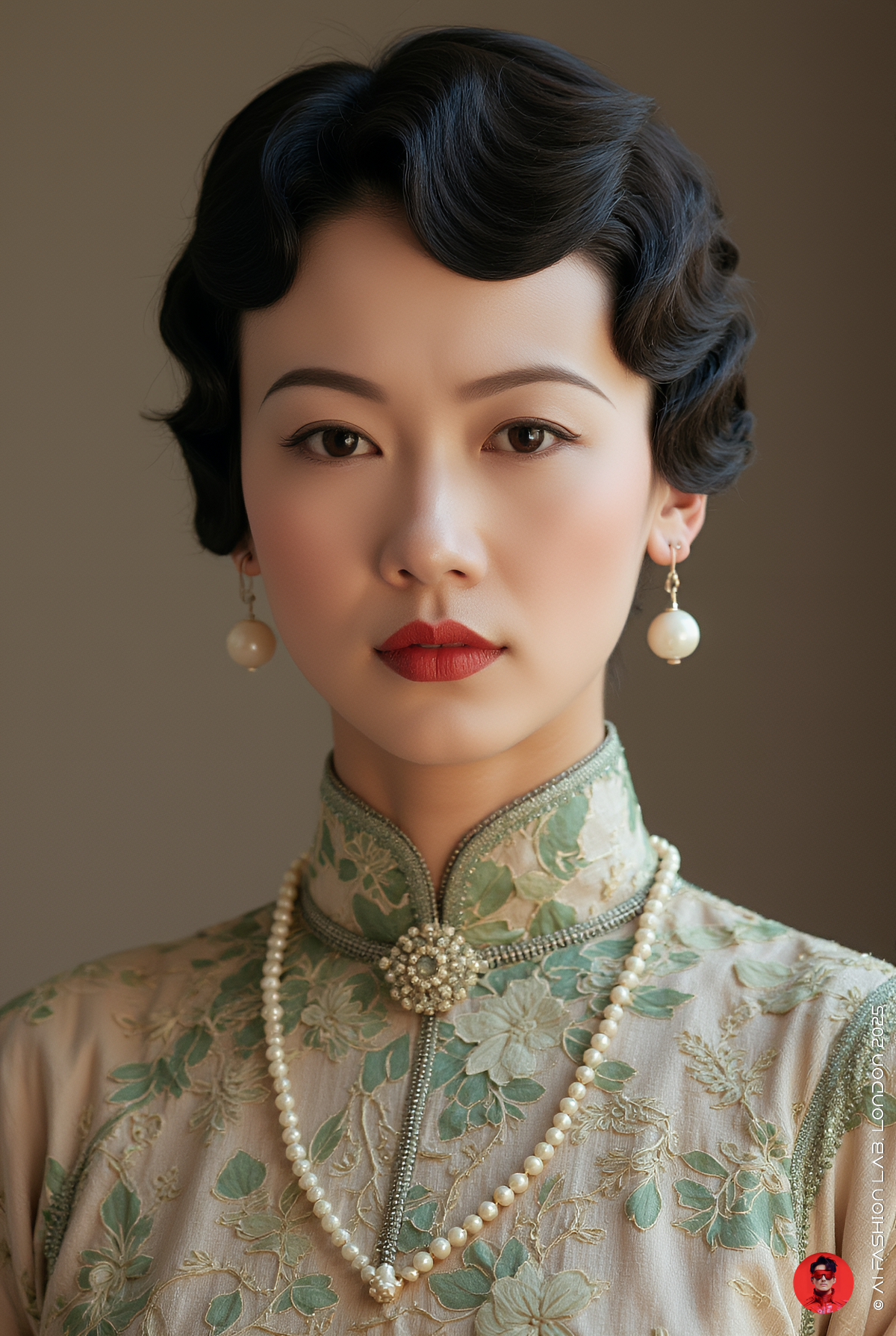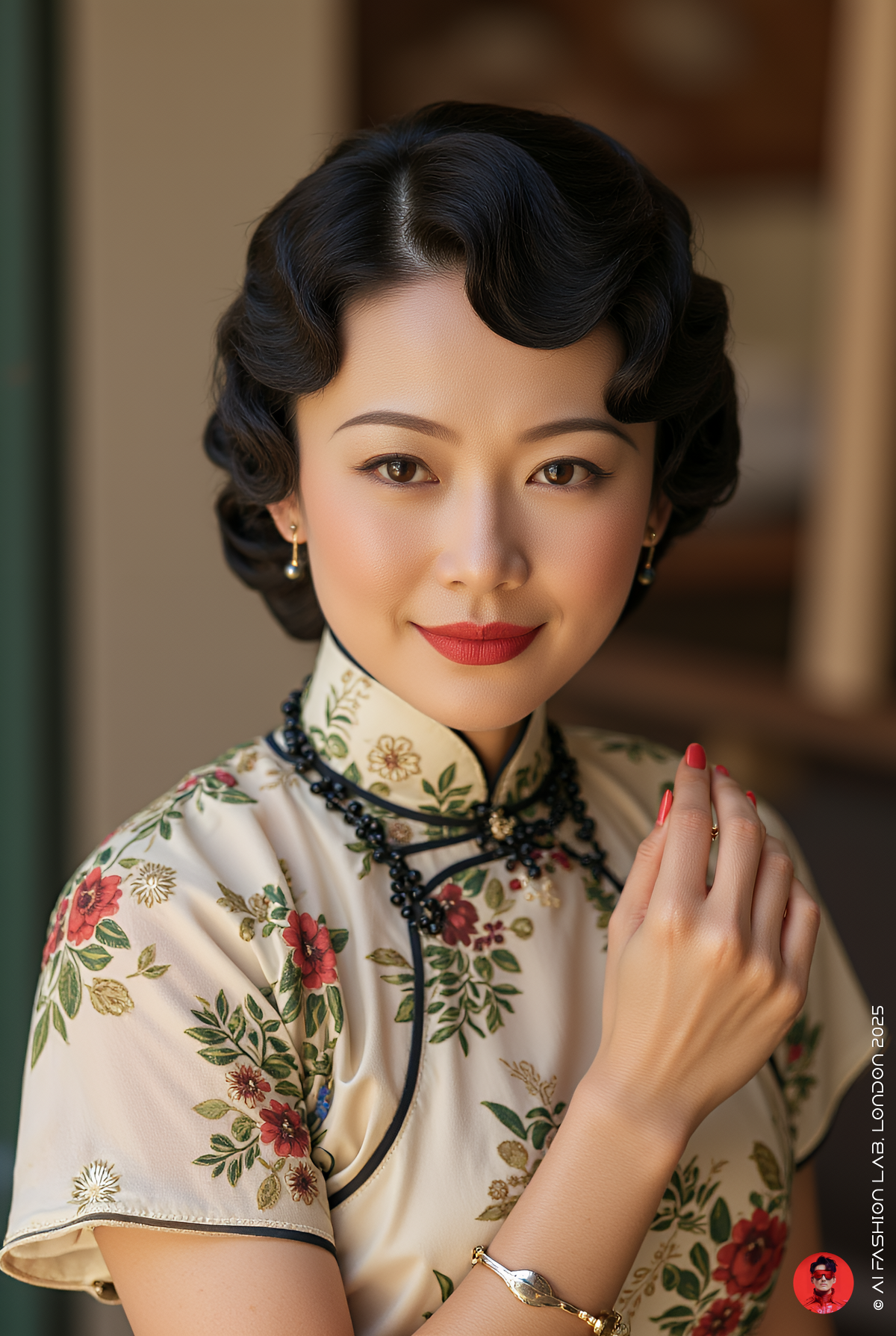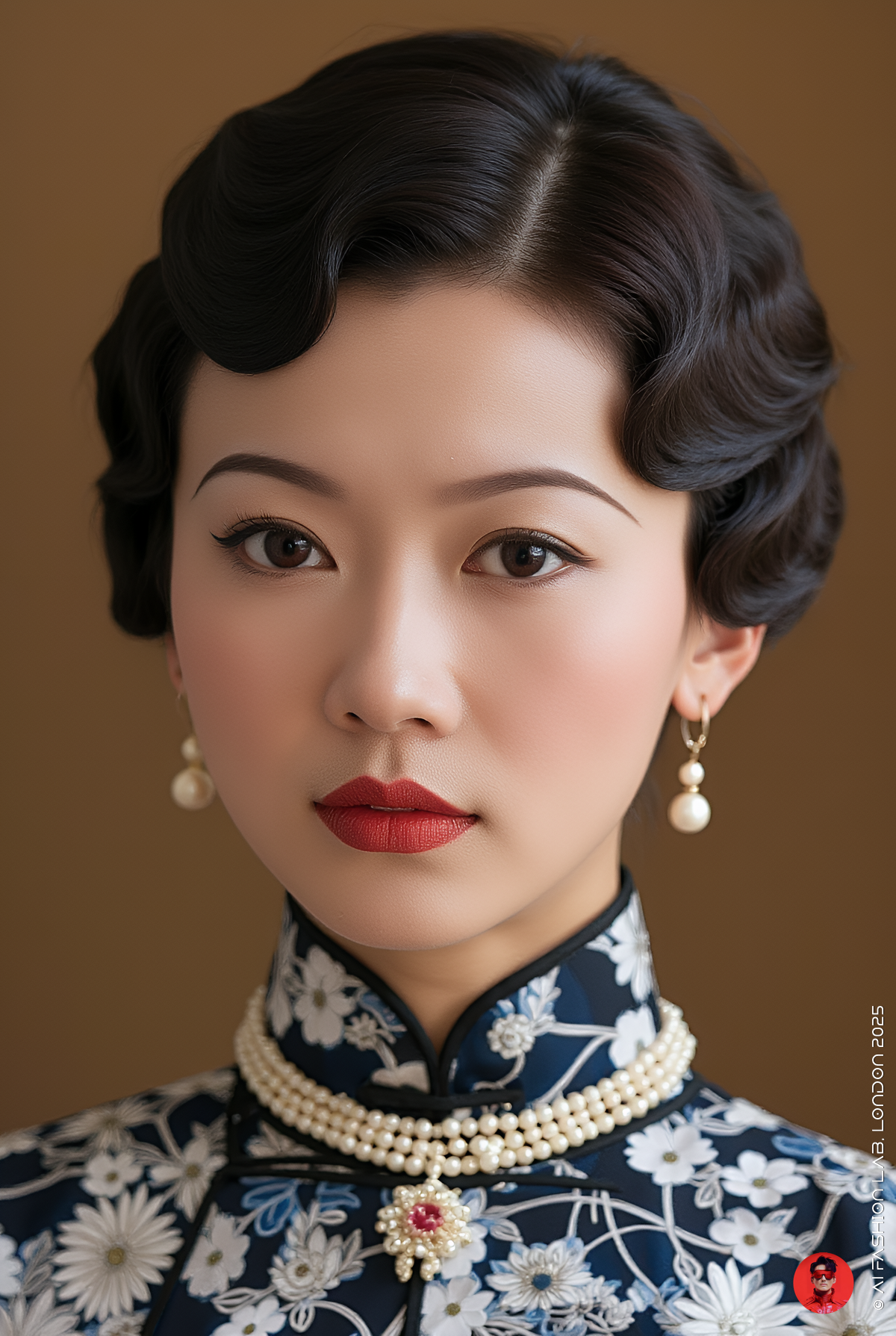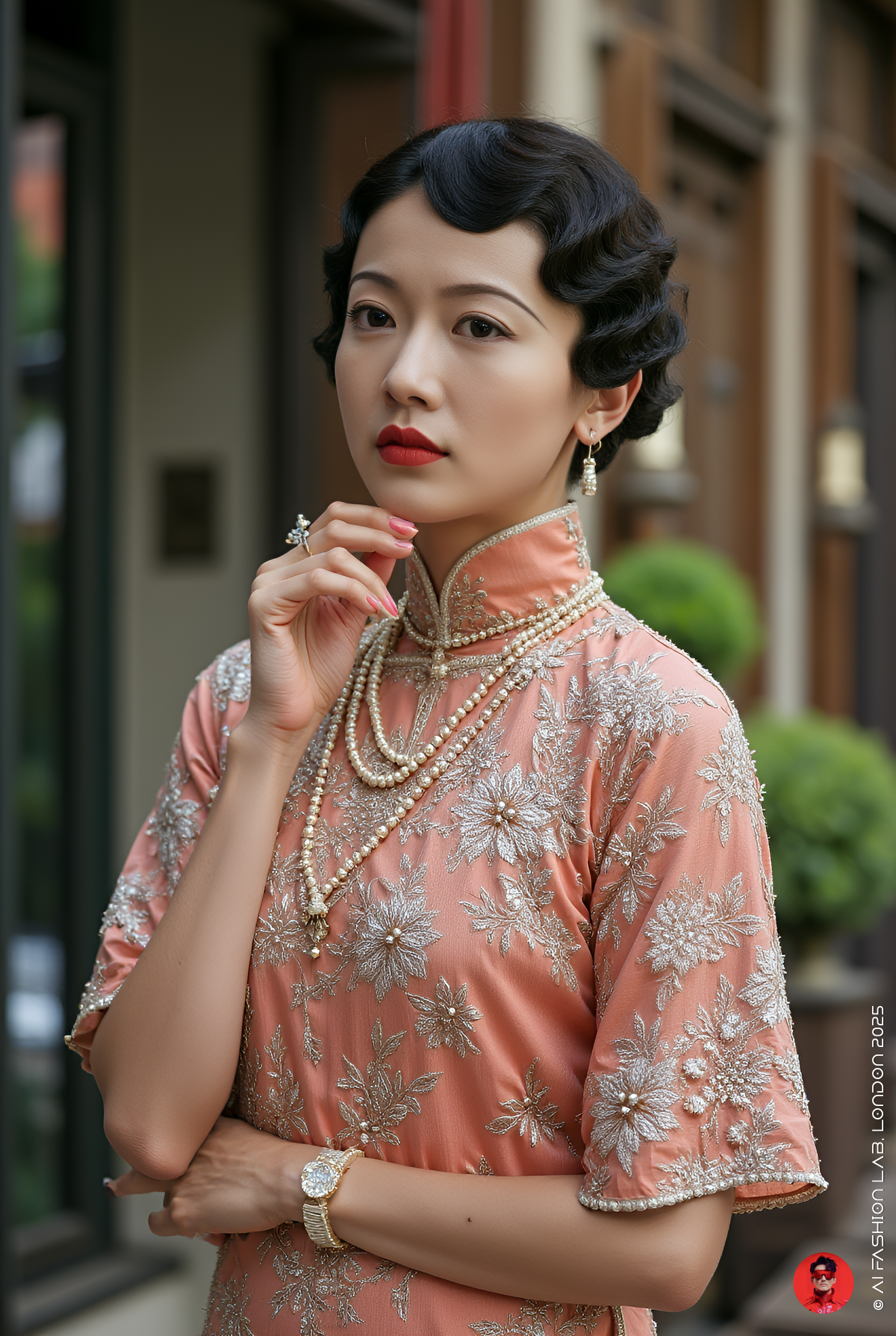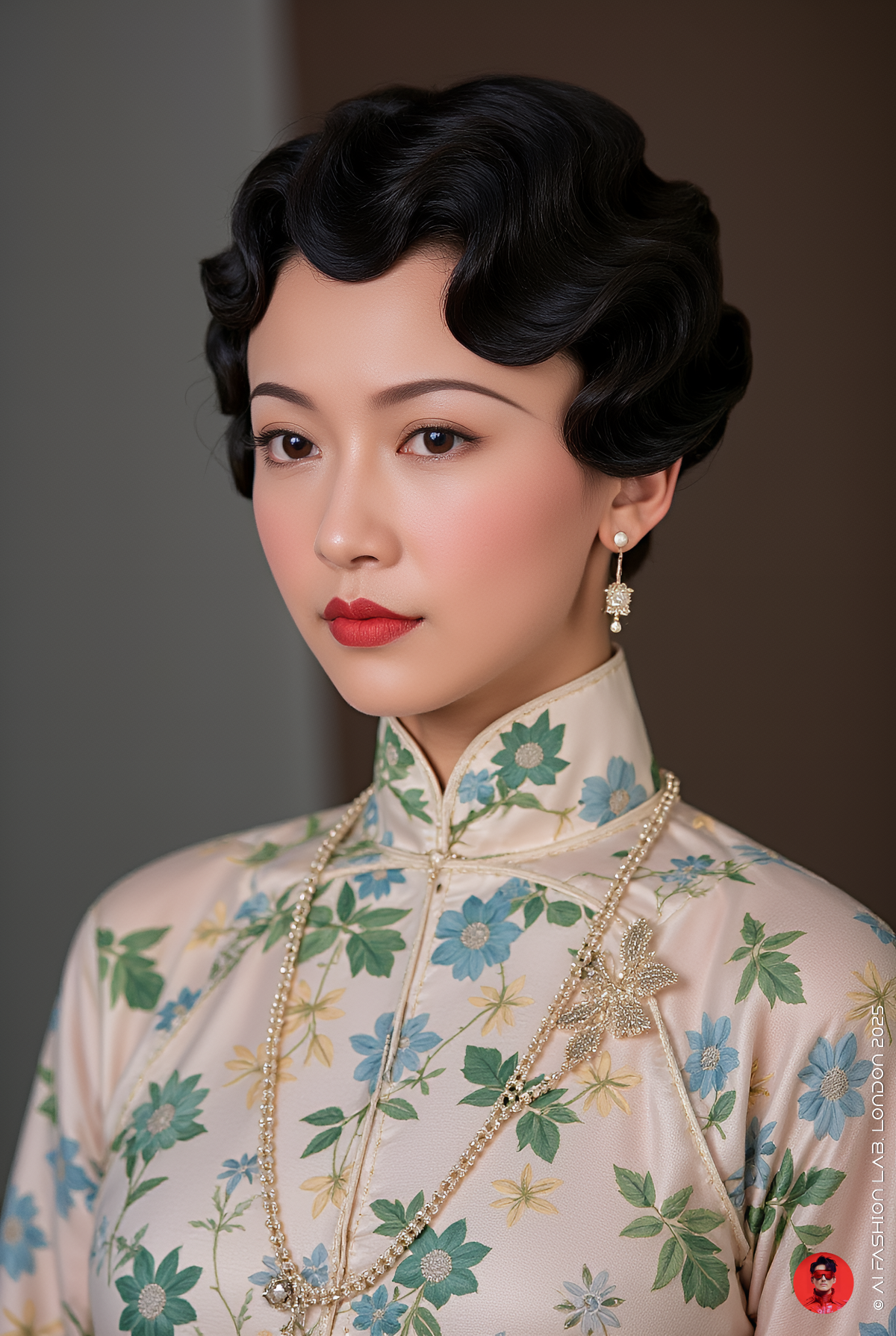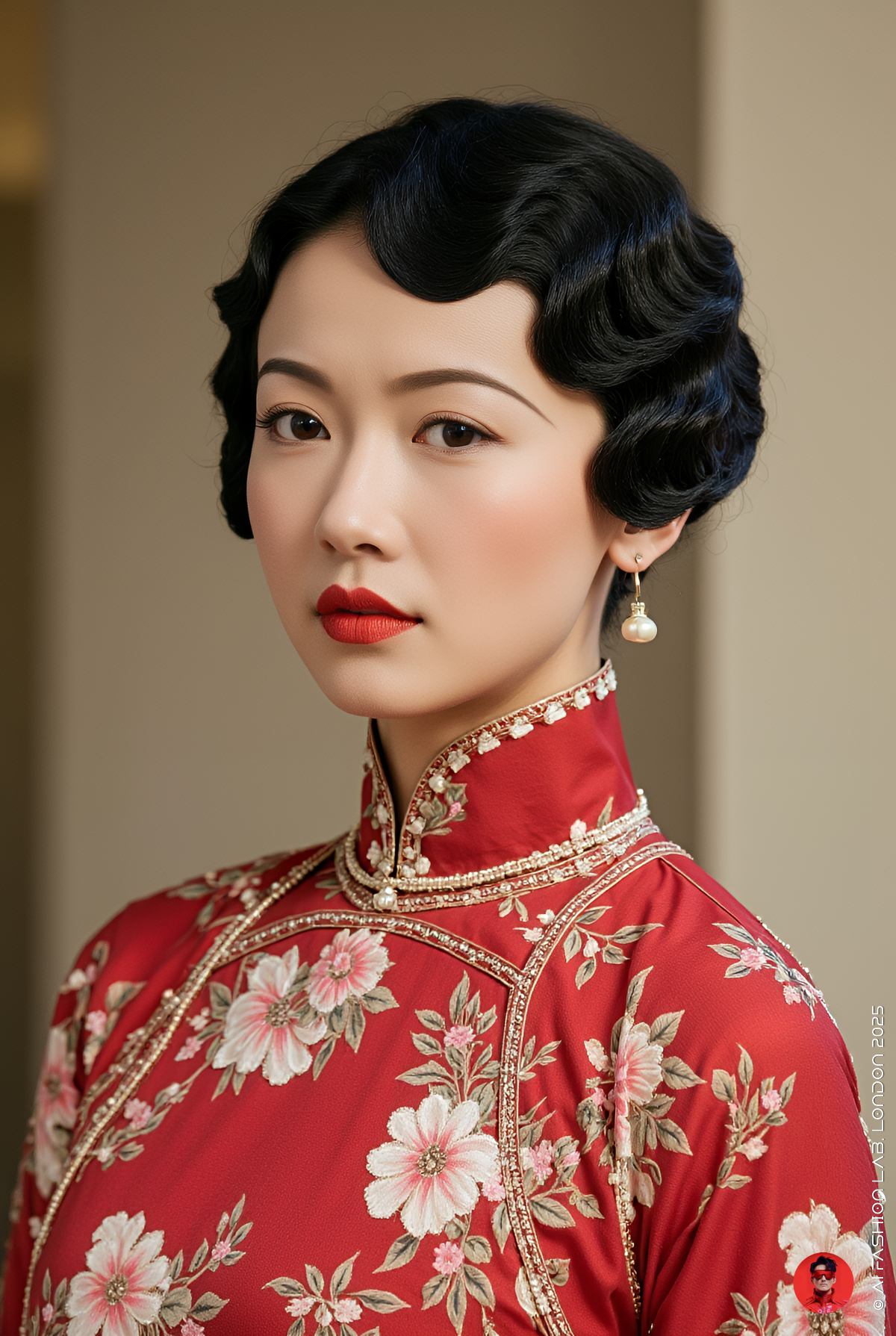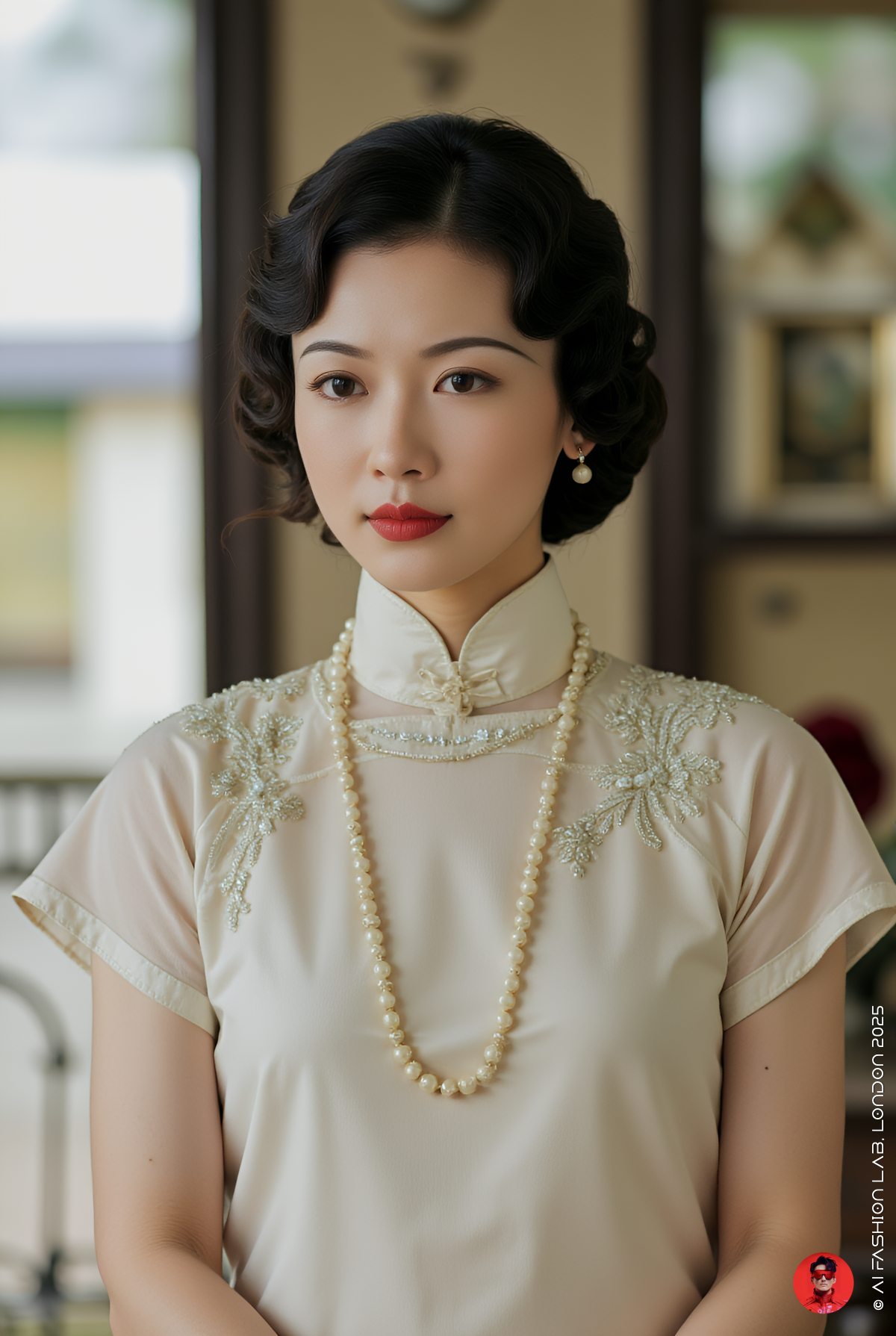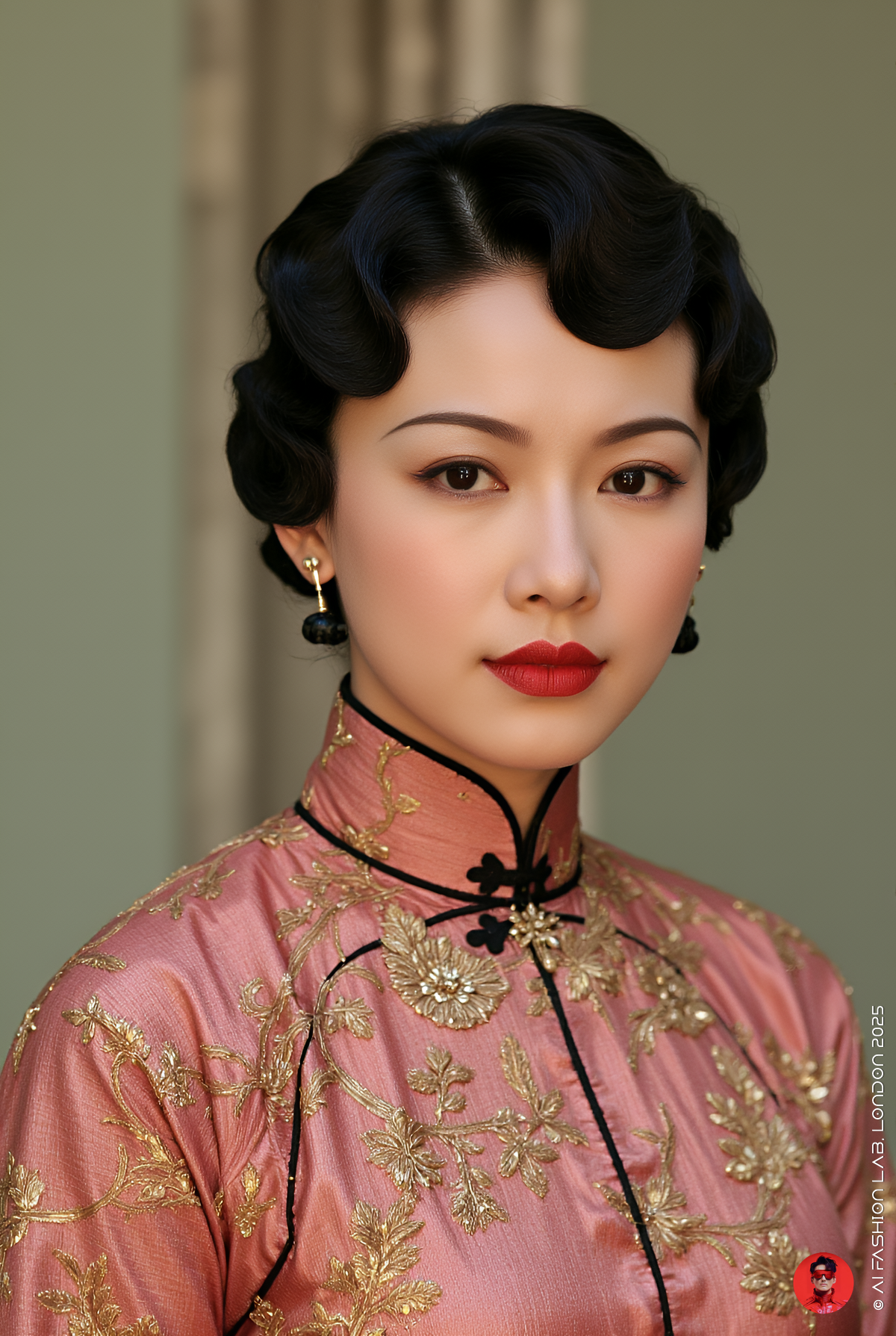ทรงผมคลื่นลอนมาเซลและชุดกี่เพ้าแห่งเซี่ยงไฮ้: ความงามของสตรีจีนสมัยใหม่ในยุคทศวรรษ 1920
ทรงผมคลื่นลอนมาเซลและชุดกี่เพ้าแห่งเซี่ยงไฮ้: ความงามของสตรีจีนสมัยใหม่ในยุคทศวรรษ 1920
ในช่วงทศวรรษ 1920 นครเซี่ยงไฮ้ได้กลายเป็นศูนย์กลางแห่งความศิวิไลซ์ที่เชื่อมโยงโลกตะวันออกกับตะวันตกอย่างกลมกลืน เมืองที่ได้รับฉายาว่า “ปารีสแห่งตะวันออก” แห่งนี้ได้เห็นผสมผสานทางวัฒนธรรมซึ่งผสานรากเหง้าทางวัฒนธรรมของจีนกับกระแสแฟชั่นจากโลกตะวันตก จนก่อเกิดภาพลักษณ์ใหม่ของสตรีสมัยใหม่ในประเทศจีน ด้วยทรงผมคลื่นลอนมาเซล (Marcel Wave) ควบคู่กับชุดกี่เพ้า (qipao หรือ cheongsam) อันสง่างาม
สตรีสมัยใหม่แห่งสาธารณรัฐในนครเซี่ยงไฮ้
ภายหลังการล่มสลายของราชวงศ์ชิงและการสถาปนาสาธารณรัฐจีน ผู้หญิงในเมืองใหญ่ เช่น เซี่ยงไฮ้ เริ่มได้รับเสรีภาพมากขึ้น ทั้งในด้านการศึกษา การทำงาน และการเลือกแต่งกาย
จากเดิมที่กี่เพ้าเคยเป็นเสื้อทรงหลวมของชาวแมนจู ได้รับการพัฒนาใหม่ให้เข้ารูป โชว์สัดส่วน มีรอยผ่าด้านข้างสูงขึ้น พร้อมปกตั้งแบบจีน โดยรับอิทธิพลการตัดเย็บจากตะวันตก กลายเป็นสัญลักษณ์ของสตรีจีนยุคใหม่ผู้สง่างาม มีอิสระ และกล้าหาญในการนิยามตนเอง
พร้อมกันนี้ ทรงผมและการแต่งหน้าก็เปลี่ยนไปอย่างเห็นได้ชัด ทรงผมคลื่นลอนมาเซล (Marcel Wave) ซึ่งกำเนิดจากปารีสและได้รับความนิยมในฮอลลีวูด เริ่มแพร่หลายในหมู่หญิงสาวชาวเซี่ยงไฮ้ โดยเฉพาะบรรดานักแสดงและสุภาพสตรีผู้มีรสนิยมเรียบหรูในสังคมเมือง ทรงผมคลื่นลอนมาเซลที่แนบสนิทกับศีรษะ เรียกว่า “波浪发” (โบลั่งฟา – ผมลอนคลื่น) ในภาษาจีน ได้กลายเป็นเอกลักษณ์คู่กับชุดกี่เพ้าที่เน้นทรวดทรงอันสง่างาม
ทรงผมคลื่นลอนมาเซล: ความงามอันหรูหราแห่งยุค
ความนิยมของลอนมาเซลในเซี่ยงไฮ้สัมพันธ์กับการเติบโตของอุตสาหกรรมภาพยนตร์และอิทธิพลความงามจากต่างประเทศ ดาราฮอลลีวูดอย่าง Clara Bow และ Louise Brooks เป็นแรงบันดาลใจสำคัญ ทั้งต่อนักแสดงหญิงจีนอย่าง Ruan Lingyu และ Butterfly Wu รวมถึงสาวชาวเมืองทั่วไปที่ติดตามแฟชั่นผ่านนิตยสารและร้านเสริมสวย
ลักษณะเด่นของทรงผมลอนมาเซล:
เทคนิค: ใช้เตารีดดัดผมแบบโบราณซึ่งต้องใช้ความประณีตสูง
สัญลักษณ์: แสดงออกถึงความทันสมัย ความสงบเรียบร้อย และความศิวิไลซ์
อิทธิพลทางวัฒนธรรม: แพร่หลายในหมู่สตรีชั้นสูง นักแสดง พนักงานออฟฟิศ และนักศึกษา
การแต่งหน้า: ลุคตุ๊กตาวินเทจ
สไตล์การแต่งหน้าของหญิงสาวในเซี่ยงไฮ้ช่วงทศวรรษ 1920 ได้รับอิทธิพลจากแฟชั่นฟลัปเปอร์ตะวันตก โดยมุ่งเน้นใบหน้าเนียนขาว คิ้วบางโค้ง ดวงตาคมเข้ม และริมฝีปากสีแดงสดหรือสีพลัม กลายเป็นลุคที่เปล่งเสน่ห์ของความมั่นใจ กล้าคิด กล้าแสดงออกของผู้หญิงยุคใหม่
กี่เพ้า: ชุดที่ถ่ายทอดความร่วมสมัย
แม้โครงร่างของกี่เพ้าในยุคนี้จะได้รับอิทธิพลจากตะวันตก แต่ผืนผ้าและลวดลายที่ใช้ยังคงสะท้อนจิตวิญญาณจีน ผ้าไหมที่ปักลายดอกเหมย ดอกเบญจมาศ หรือดอกโบตั๋น ล้วนเป็นสัญลักษณ์ของความเป็นหญิงแบบจีนดั้งเดิม
ผู้หญิงมักสวมสร้อยไข่มุกยาว ต่างหูห้อย และนาฬิกาข้อมือเรือนเล็ก เพื่อเสริมลุคให้ดูสง่างามแบบฝรั่งเศสผสานความอ่อนหวานแบบจีน ไม่ใช่เรื่องแปลกเลยที่จะเห็นสุภาพสตรีสวมชุดกี่เพ้าถ่ายภาพในสตูดิโอ พร้อมทรงผมลอนมาเซลที่เงางามและการแต่งหน้าที่เปล่งประกาย สะท้อนถึงความสง่างามที่ไร้กาลเวลา
ทศวรรษ 1920 ไม่ได้เป็นเพียงช่วงเวลาแห่งแฟชั่นในเซี่ยงไฮ้ หากแต่คือการเริ่มต้้นของความเป็นสมัยใหม่ในสังคมจีน ผ่านทรงผมคลื่นลอนมาเซลและชุดกี่เพ้าที่เข้ารูป สตรีแห่งนครเซี่ยงไฮ้ได้สร้างสรรค์อัตลักษณ์ใหม่ให้กับตัวเอง—อัตลักษณ์ที่เคารพรากเหง้าแห่งวัฒนธรรมจีน ขณะเดียวกันก็โอบรับความเปลี่ยนแปลงของโลกสมัยใหม่อย่างลงตัว
จนถึงปัจจุบัน สไตล์นี้ยังคงเป็นแรงบันดาลใจให้กับงานแฟชั่น ภาพถ่าย และภาพยนตร์ในฐานะสัญลักษณ์ของความงามร่วมสมัยที่เต็มไปด้วยวัฒนธรรมและประวัติศาสตร์
Marcel Waves and the Modern Cheongsam: Shanghai Beauty in the 1920s
During the 1920s, Shanghai stood at the crossroads of East and West, rapidly transforming into Asia’s most cosmopolitan metropolis. Known as the “Paris of the East,” the city witnessed a cultural explosion, where Chinese traditions mingled with Western trends, giving birth to a distinctive style among modern Chinese women—especially the iconic look of marcel-waved hair paired with the form-fitting cheongsam (or qipao).
The Rise of the Modern Woman in Republican Shanghai
Following the fall of the Qing dynasty and the rise of the Republic, women in urban centres like Shanghai began to experience greater freedom in education, employment, and fashion. The cheongsam, originally a loose-fitting Manchu robe, evolved into a body-hugging dress with high slits and Mandarin collars. Influenced by Western tailoring, this modern silhouette became a symbol of the progressive Chinese woman—elegant, independent, and worldly.
Alongside this sartorial transformation was a revolution in hairstyles and makeup. The marcel wave—originating in Paris and popularised in Hollywood—became a sensation among Shanghai’s elite women and film actresses. Known in Chinese as “波浪发” (bo lang fa), these waves were sculpted using heated irons to create a rhythmic, S-shaped pattern that hugged the contours of the head. Paired with the cheongsam, marcel waves lent a polished, urbane sophistication to women who navigated ballrooms, tea houses, and editorial offices with grace and confidence.
Marcel Waves: A Glamorous Statement
The popularity of marcel waves in Shanghai was closely tied to the rise of the film industry and international beauty standards. Hollywood stars such as Clara Bow and Louise Brooks were emulated not just by Chinese actresses like Ruan Lingyu and Butterfly Wu, but also by everyday women flipping through fashion magazines in the city’s cafés and salons.
Features of the Marcel Wave Hairstyle:
Technique: Created using hot curling irons, the waves were set with precision and often paired with bobbed haircuts.
Symbolism: Represented modernity, control, and cosmopolitan identity.
Cultural Impact: Embraced by women from elite families, entertainers, secretaries, and students alike.
Makeup and Poise: The Vintage Doll Look
Makeup in 1920s Shanghai echoed the “flapper” aesthetic—porcelain skin, darkly lined eyes, and scarlet lips. This “modern doll” look reflected a new vision of femininity: strong, sensual, and stylised. Eyebrows were thin and arched dramatically; rouge was applied to the apples of the cheeks; lips were painted into perfect Cupid’s bows. These choices were not merely aesthetic but symbolic—asserting control over one’s body and image in a rapidly changing world.
The Cheongsam as a Canvas of Cultural Fusion
While the silhouette of the modern cheongsam was Western-influenced, the fabrics and motifs remained deeply Chinese. Silks embroidered with plum blossoms, chrysanthemums, and peonies told stories of tradition and femininity, even as the garment’s shape signalled a forward-looking society.
Women accessorised with long strands of pearls, drop earrings, and dainty wristwatches—blending Parisian chic with Chinese grace. It was not uncommon to see women posing for studio portraits in lavish cheongsams, their marcel waves glistening under soft lighting, exuding confidence and poise.
The 1920s in Shanghai were more than just a decade of style—they were a defining moment for Chinese modernity. Through the elegance of marcel waves and the tailored perfection of the cheongsam, women in Shanghai carved out a new identity for themselves—one that honoured tradition while embracing the modern world. Today, this aesthetic continues to inspire fashion, photography, and cinema as a symbol of timeless sophistication and cultural hybridity.
#aifashionlab #AI #aiartist #aiart #aifashion #aifashiondesign #aifashionstyling #aifashiondesigner #fashion #fashionhistory #historyoffashion #fashionstyling #fashionphotography #digitalfashion #digitalfashiondesign #digitalcostumedesign #digitaldesign #digitalaiart #ThaiFashionHistory #ThaiFashionAI #thailand #UNESCO

















